1lumen selects and reviews products personally. We may earn affiliate commissions through our links, which help support our testing.
Olight H67 review
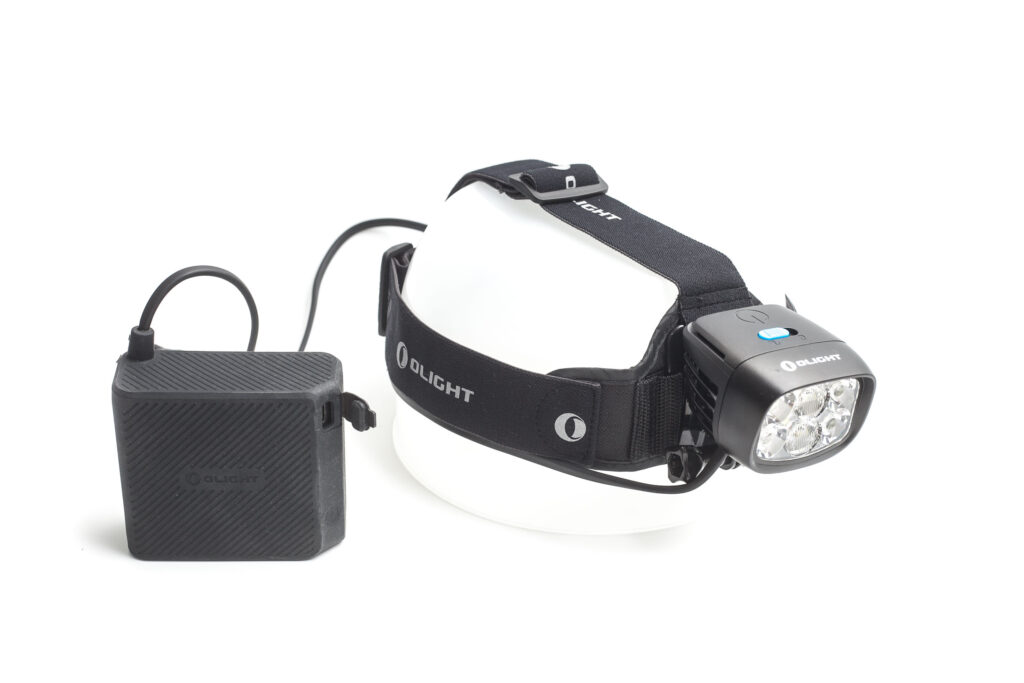
Olight H67 specifications
| Brand/model | Olight H67 |
|---|---|
| Flashlight category | Headlamp / searchlight |
| LED | 6*CREE XHP50.2 |
| Max. output | 12,000 Lumens |
| Max. beam distance | 310 meters |
| Max. beam intensity | 24,000 cd |
| Battery config. | Battery pack (14.4v / 100Wh) |
| Onboard charging | USB-C |
| Modes | 4 |
| Blinkies | SOS |
| Waterproof | IPX4 |
| Review date | February 2023 |
Introduction:
The Olight H67 is not like your ordinary headlamp. It is the brightest headlamp in the world, and with some amazing features, like a GoPro mount, a remote battery pack, and a built-in cooling fan.
Besides this amazing piece of technology, Olight has a broad selection of lights. This includes some very popular flashlights and headlamps, and even penlights, lanterns, and desklamps. So, basically, they offer almost any type of portable light source under the sun.
Talking about suns, the Olight 67 does indeed turn the darkness into day light.
And to do so, it uses 6 CREE XHP50.2 LEDs which are cooled from the rear by a built-in fan, that is temperature controlled.
Well, I don’t want to spill all the beams.. I mean beans… so let’s dive into it.
Package quality.
I have seen many types of Olight packages over the years, but this one looks a bit different. It looks a bit cheap compared to the other ones, and I am only talking about the carton box though. Because inside the box you can find the H67 tucked in a nice pouch. And this is what you find inside the package:
- The headlamp: Olight H67
- Carry bag for the whole kit
- Remote battery pack with USB-C, inside a carry pouch
- USB-C cable
- Spare little clip for the remote battery pack cable
- Manual
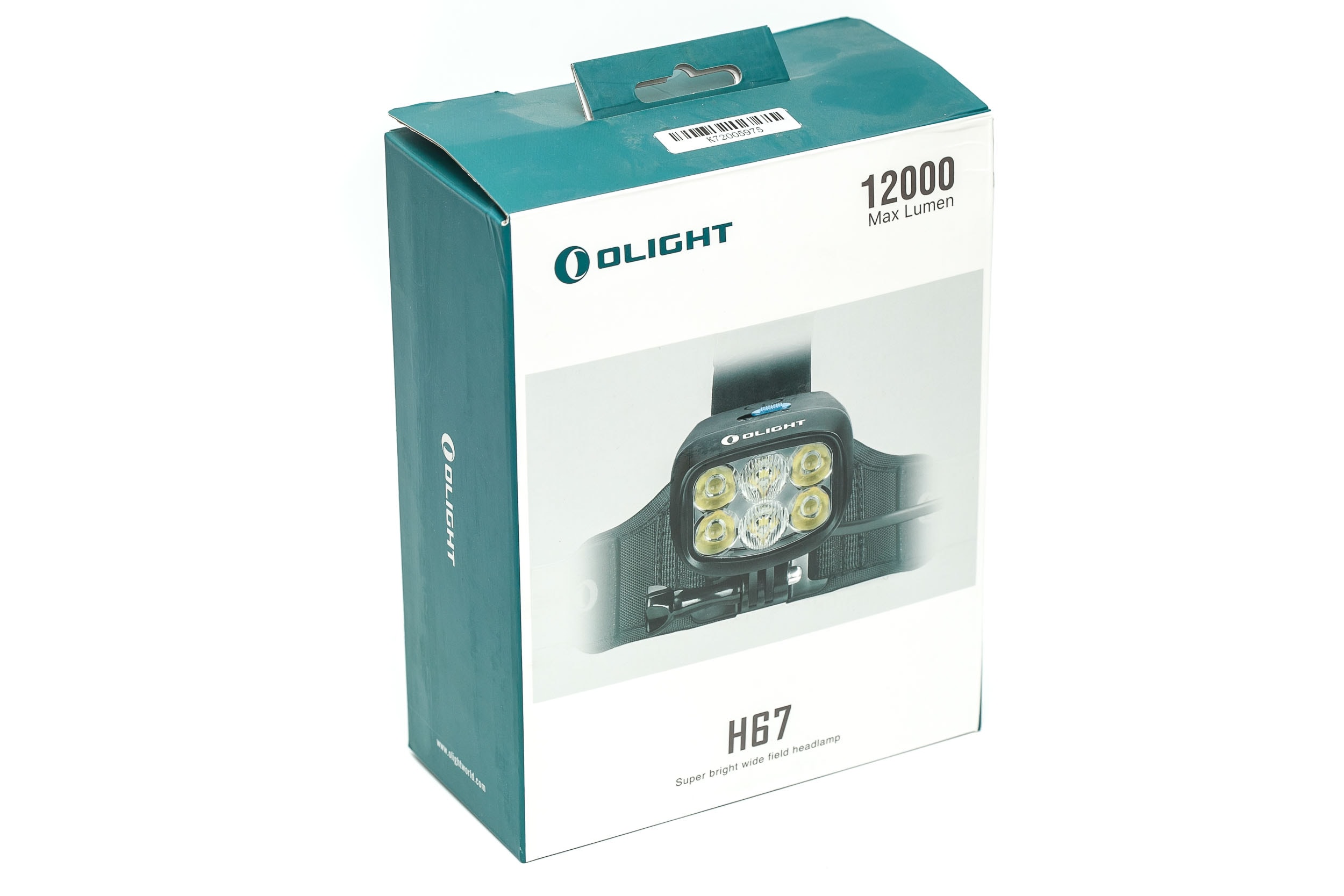
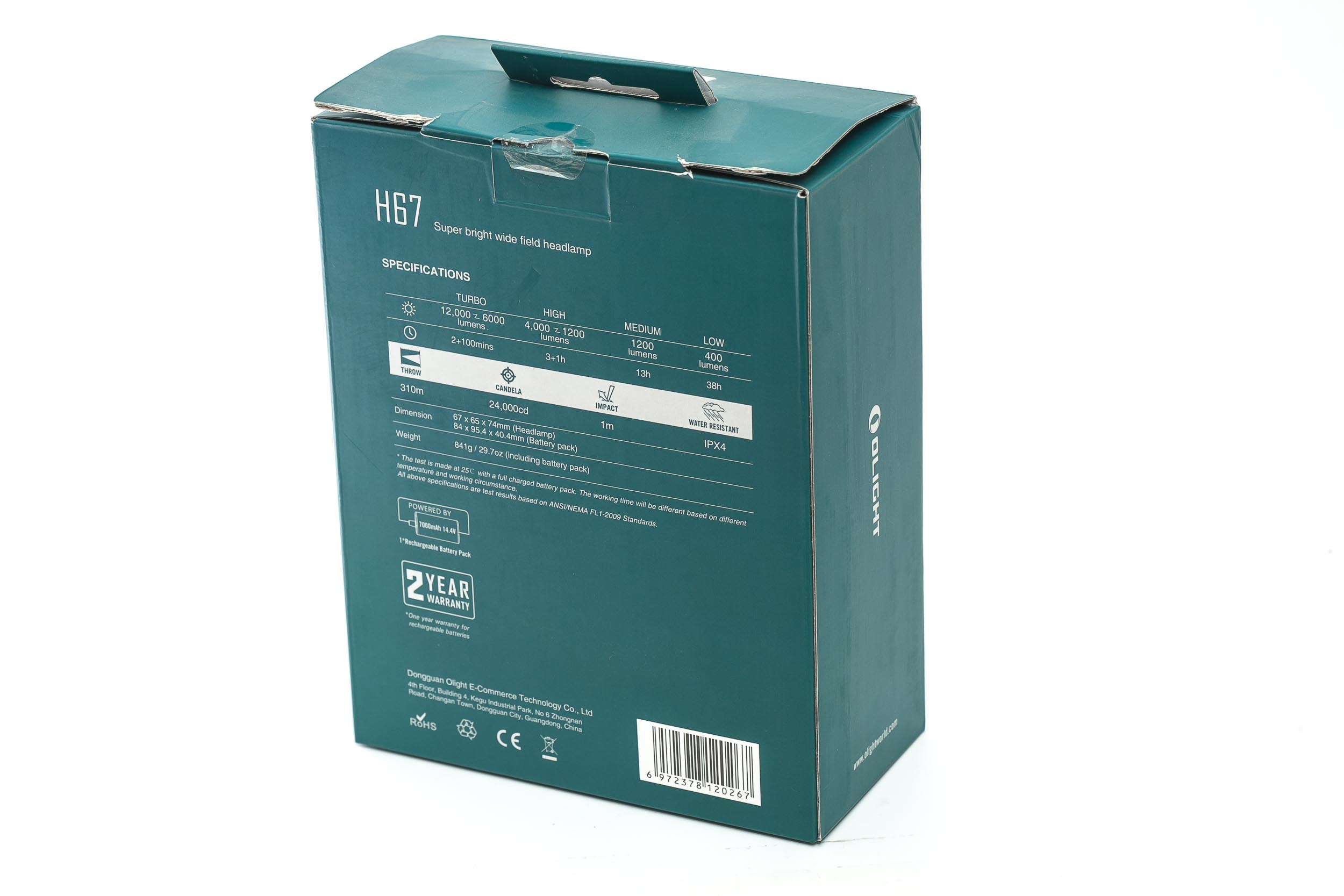
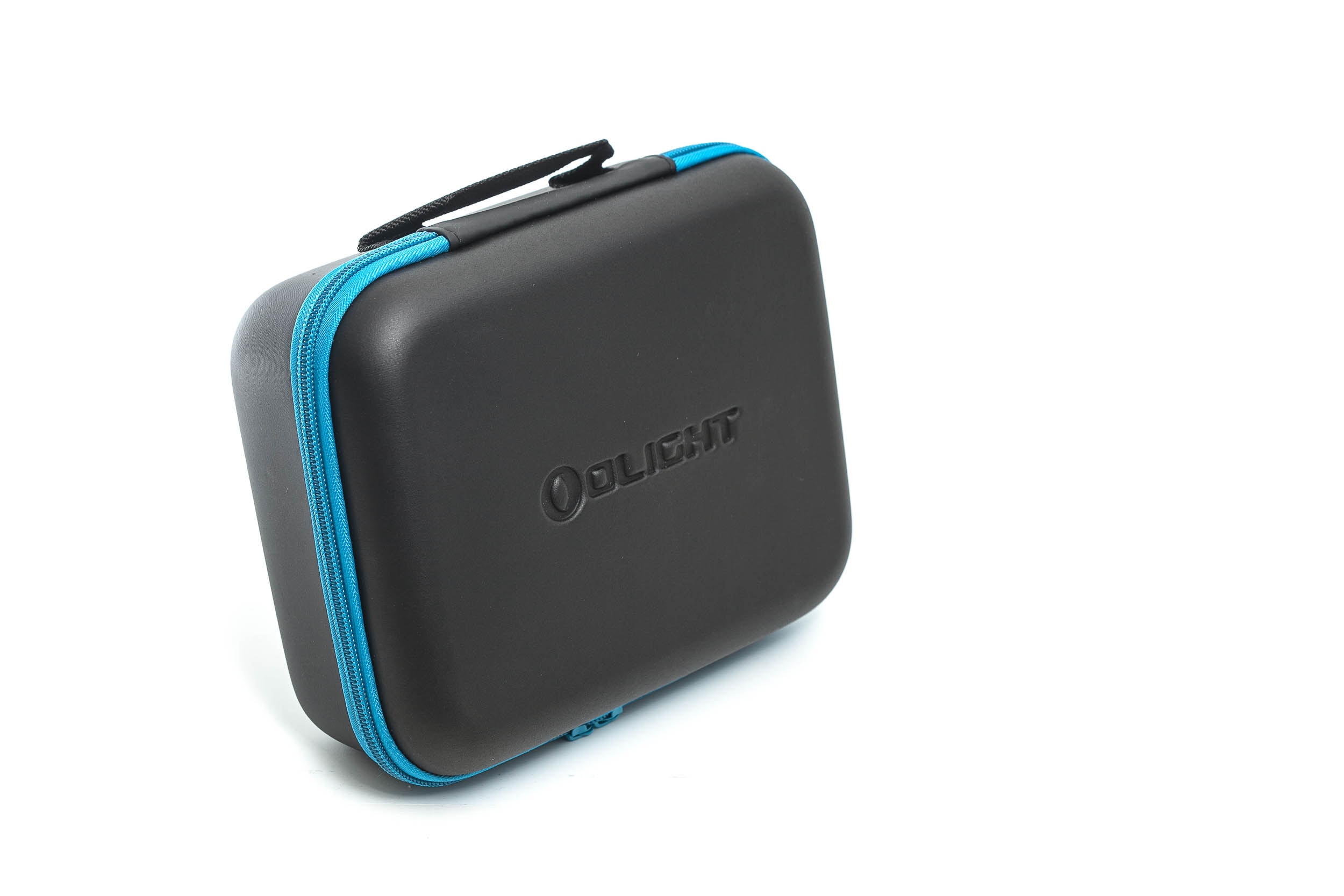
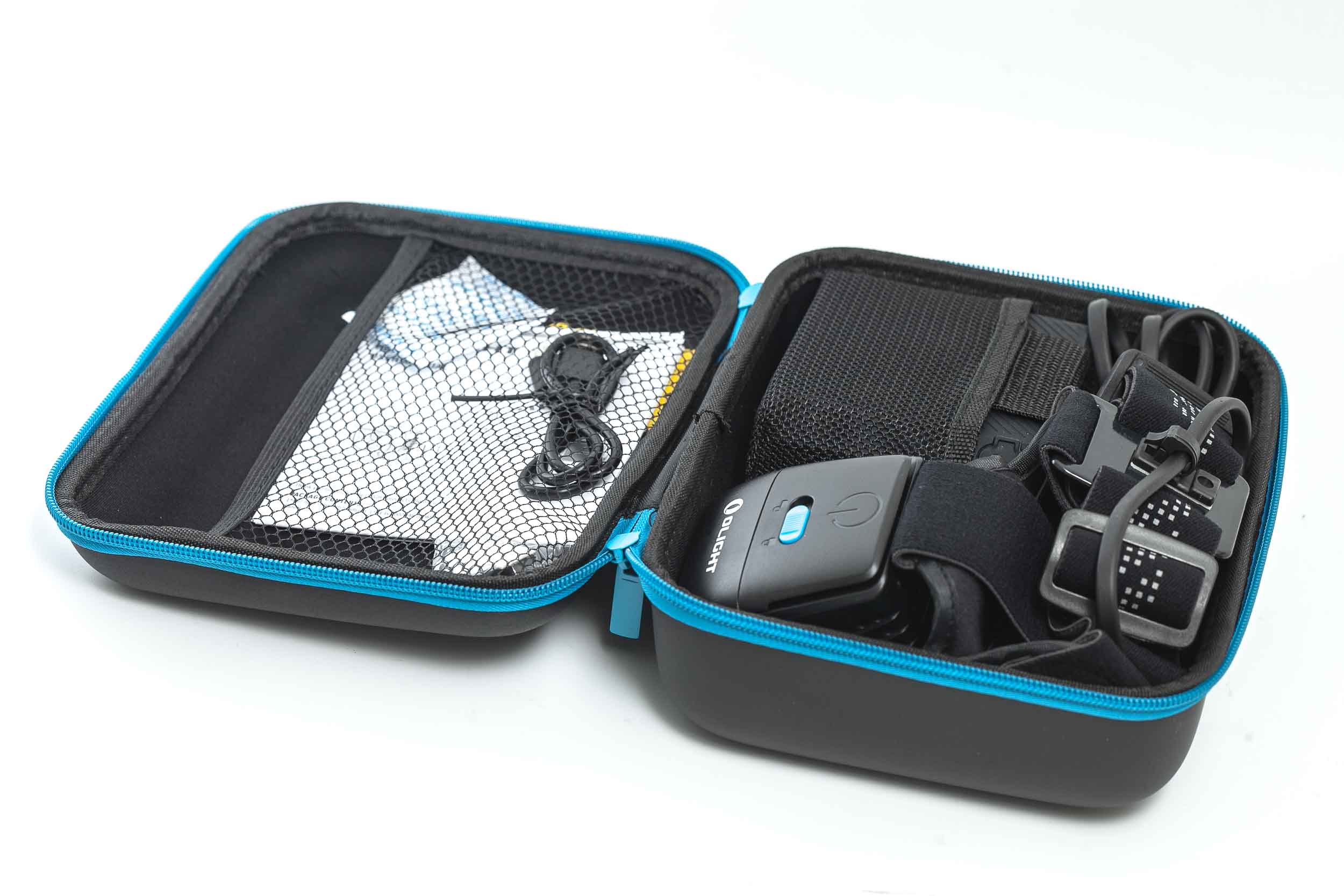
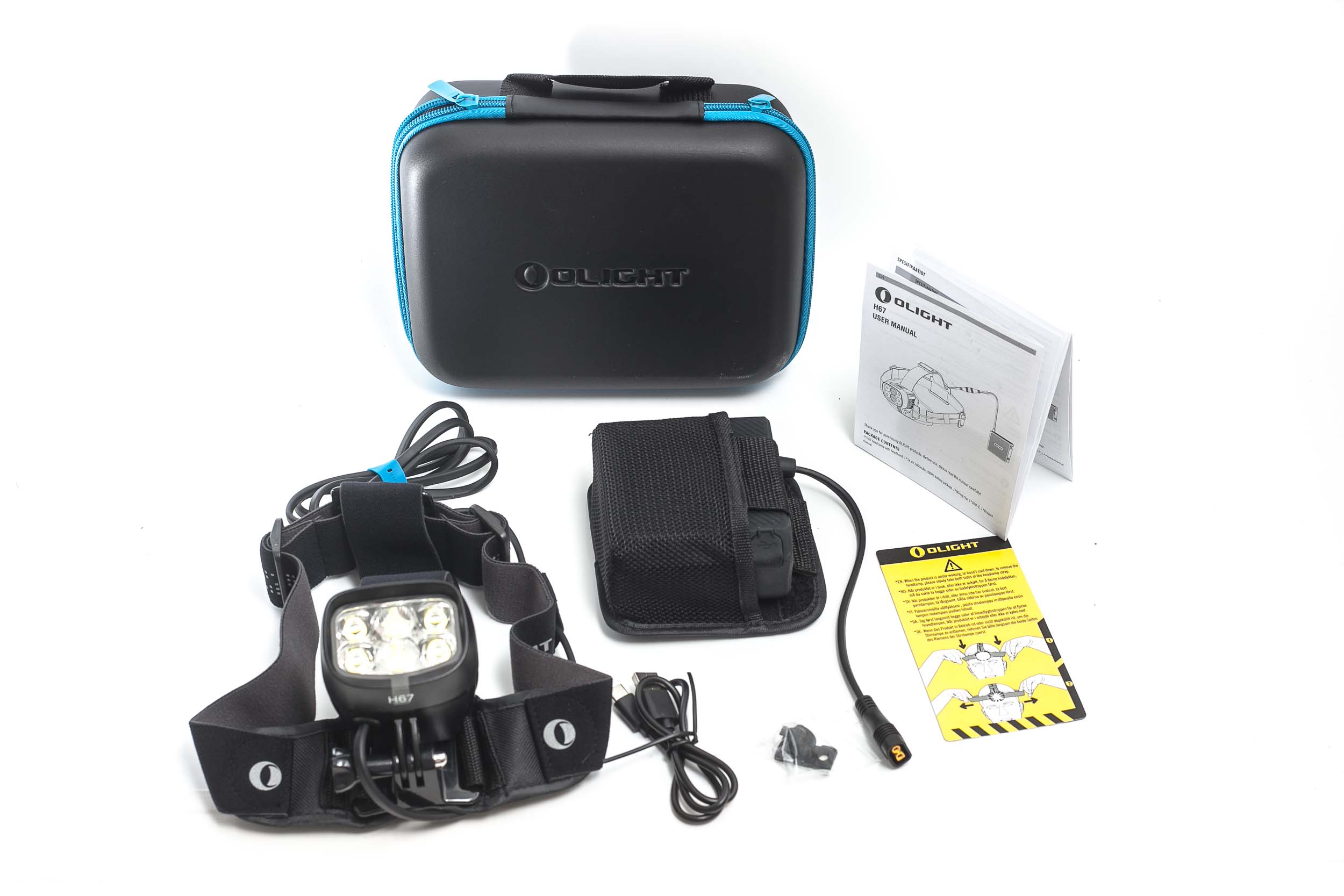
Headlamp in use
If you look closely, you’ll notice that the H67 isn’t just a headlamp. Even though it is connected to a headband, the connection that is used is a GoPro mount.
That makes it extremely versatile and gives you lots of different options. Mounting on top of a bike helmet is one, but there are plenty more, including mounting it onto your bike, motorbike, chest mount harness, or even a car. As long as it uses a GoPro mount, you are good to go. Great for camping, biking, or even a backup light for your car or truck.
So, you aren’t limited to just wearing it on your head. And unlike the average headlamp, it has a heavy remote backpack with a capacity of 100Wh. And since it’s so big and heavy, it’s recommended to put it in your backpack, close to your body, so you can keep it relatively warm in low temperatures. But Olight also includes a carry bag, that can be connected to a belt via a velcro strap.
Another benefit of the remote battery pack is that there is no heavy weight added to your head. During my bike ride, I didn’t have a feeling that it was too heavy or bouncing too much on my head.
And honestly, in most cases, the low mode would have been enough for me, but I couldn’t stop myself from double-tapping the switch a couple of times.. Why? Because, why not?
Even though this light is great for night hikes, it’s probably more suitable for biking, or other high-speed activities. The Dutch Olight website even mentions Night skiing, mountain biking, and endurance riding.
High-speed activities also help keep the headlamp cooled. But even if you walk or sit still, there is a built-in fan to keep the light’s temperature in check. And it really helps. Even in Turbo mode, I measured the highest temperature at only 59 degrees. The fan is temperature controlled, so it doesn’t turn on when it’s not needed.
When you use the 12,000-lumen mode, eventual the fan will turn on, which is pretty audible. And honestly, the 12,000 lumens are impressive, it’s probably overkill for most situations, lol.
The switch is prominently positioned on top of the headlamp unit, making it easy to find and use, even wearing gloves. It doesn’t have a small button switch like most other headlamps, it’s basically half of the top of the headlamp unit. It’s so big, you can’t really miss it.
That makes it easy to use, but will also accidentally change modes by accidentally tapping it.
Wearing it:
The headband has the usual strap around your head, as well as a strap that goes on top of your head. Both of them are adjustable and have no sharp edges. They are also relatively easy to adjust while riding your bike.. (without having your hands on the handlebar)
There is a little design issue in my opinion. The remote battery pack is connected to the headlamp with a strong and thick cable, that comes out of the headlamp at the bottom right-hand side. Without any adjustment, it comes into the field of vision, so that could be annoying. So you’d have to make it tighter, or use something to attach it to the side of the headband (like a clip or a velcro strap).
The headband itself has a little loop to run this cable through on the left-hand side. But I think it should have been on the right-hand side, or on the top (as the product image makes you believe). If you want to pull the cable through that little loop on the left-hand side, it’s blocking your sight.
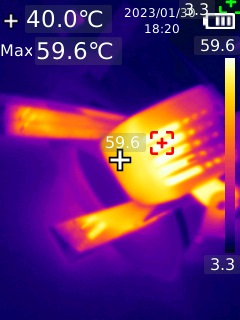
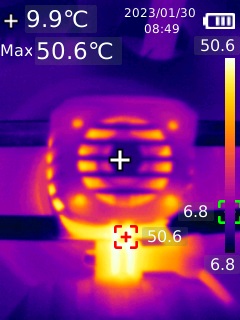
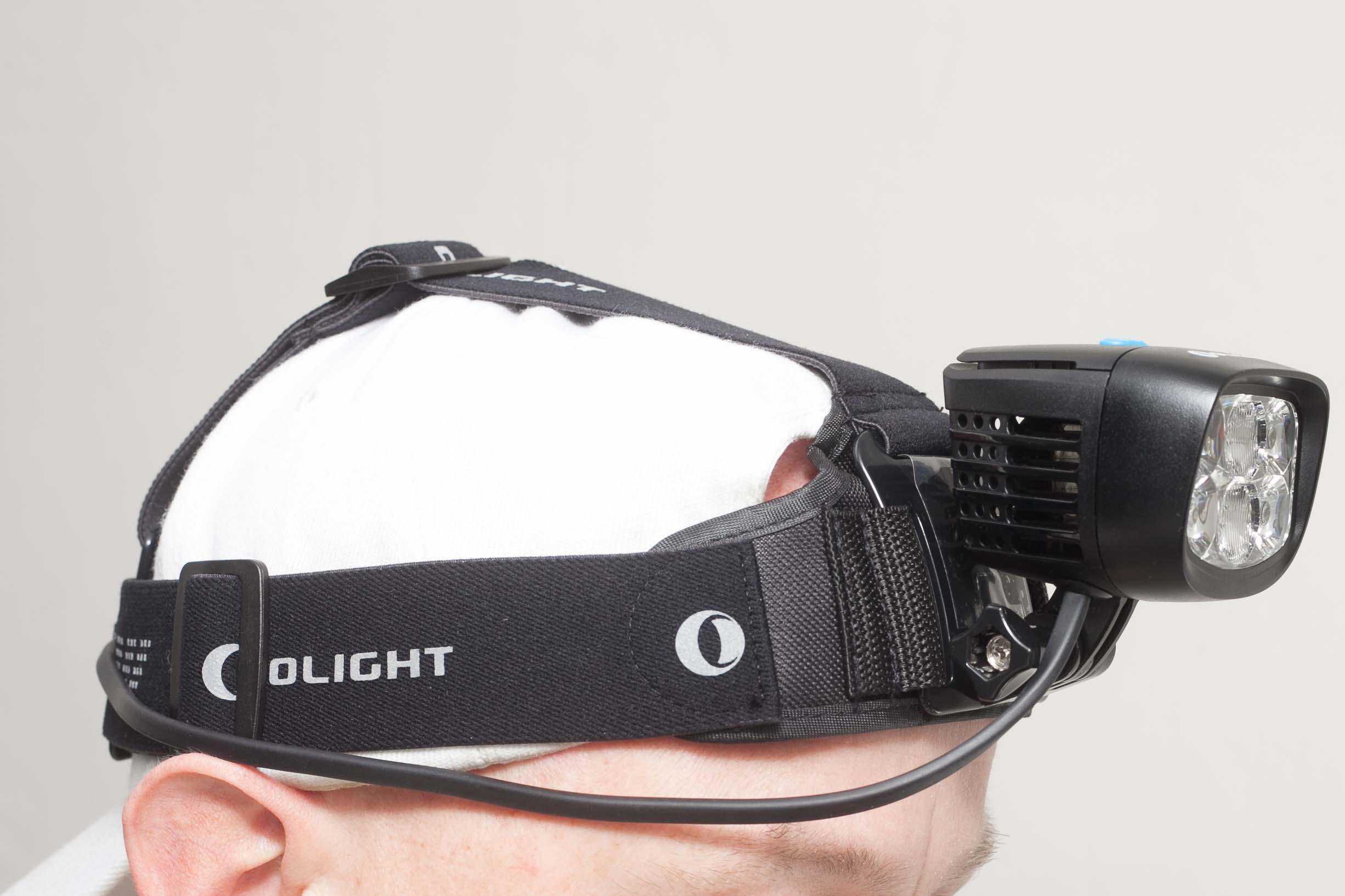
Build Quality, and Warranty
Olight uses high-quality materials with all of its products, including the H67.
The headband is pretty comfortable and adjustable. There is no place where your head is touching anything hard or sharp. The headband seems to be plenty durable, and the GoPro mount doesn’t look too cheap either. While riding your bike, it’s pretty easy to loosen the GoPro mount and adjust the direction of the headlamp.
The cable that’s connecting the headlamp and battery pack is thick and strong I wouldn’t worry about breaking it. I carried the battery pack in my jacket pocket, which was no trouble at all.
Olight’s warranty is one of the best in the industry: 30-day no-hassle returns and a 5-year limited lifetime warranty on most lights. Defective lights can be returned for repair within the warranty period, but the buyer pays for shipping. Olight covers the cost of repairs and parts. Even after-warranty support is generous with a 30% discount for a replacement item. Rechargeable batteries are covered with a 1-year warranty. Accessories such as pocket clips, holsters, filters, lanyards, etc. are not included under the warranty.

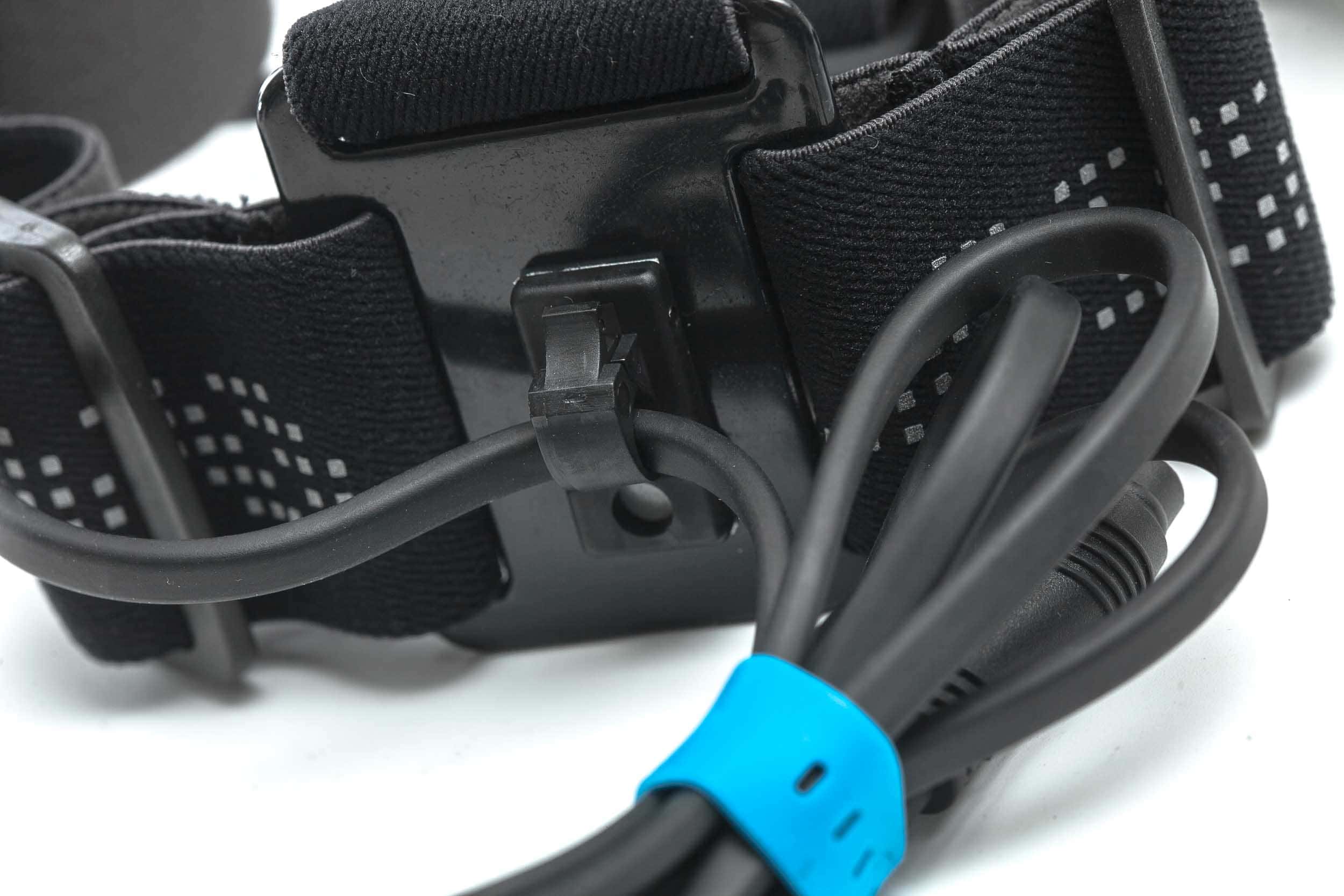
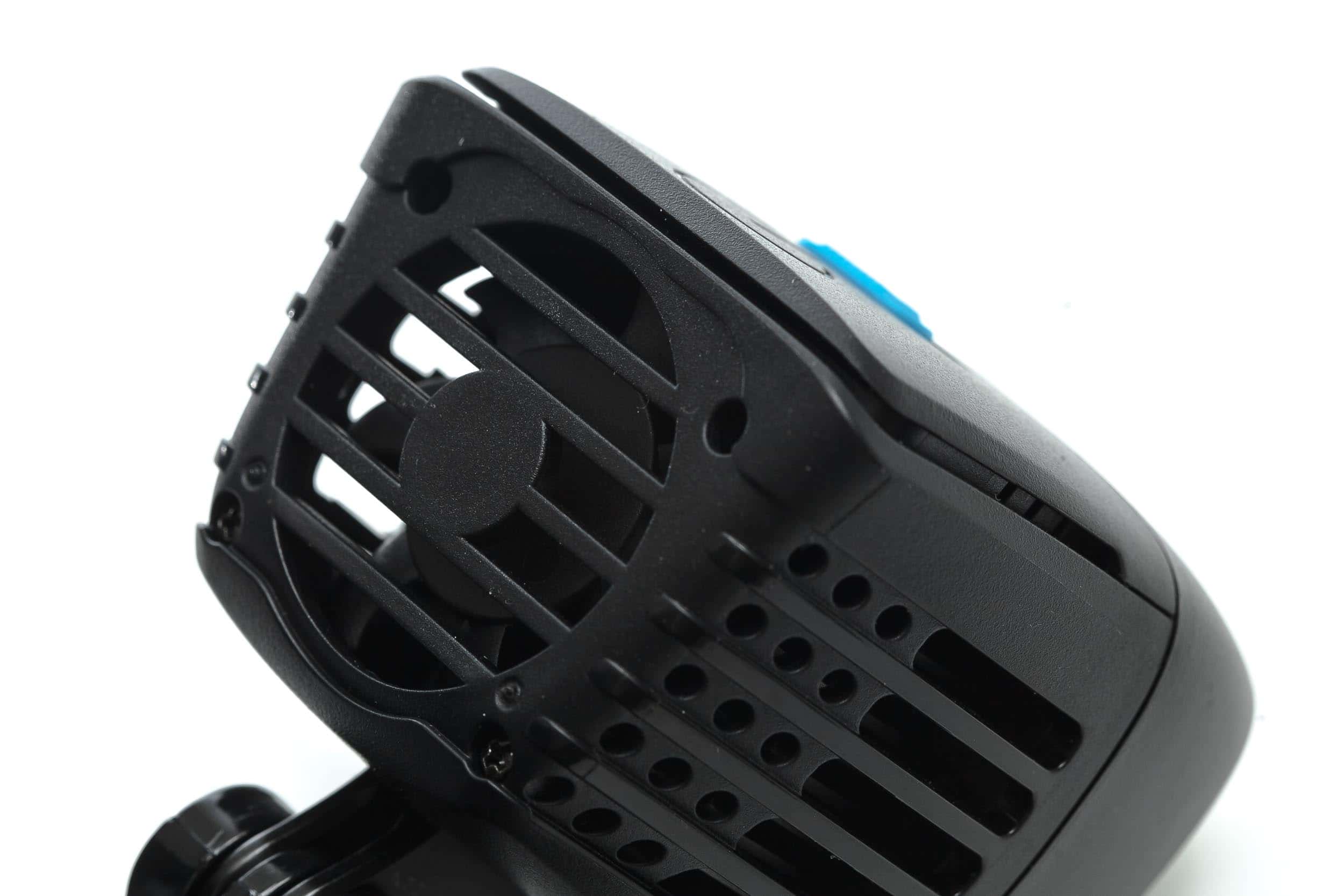

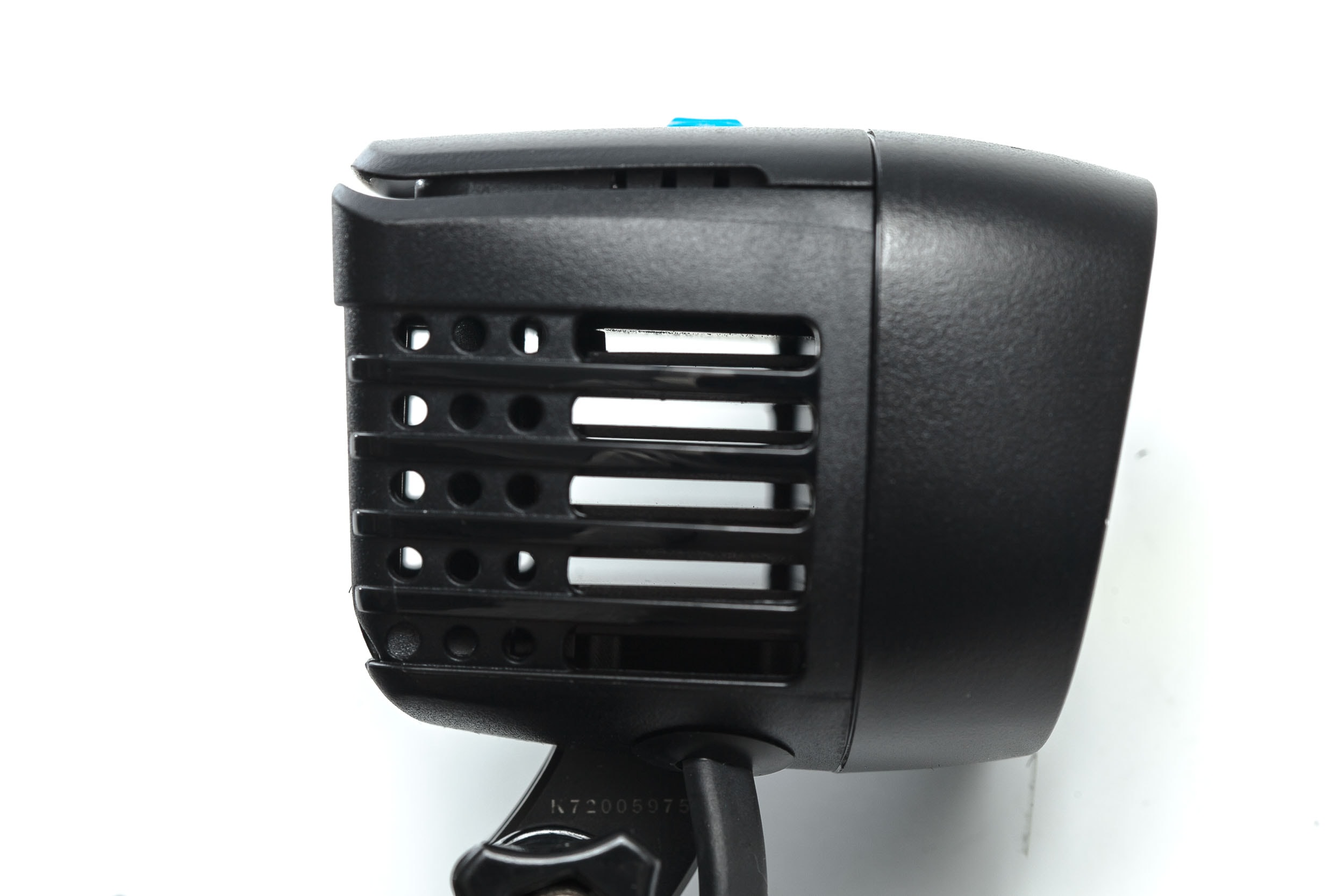
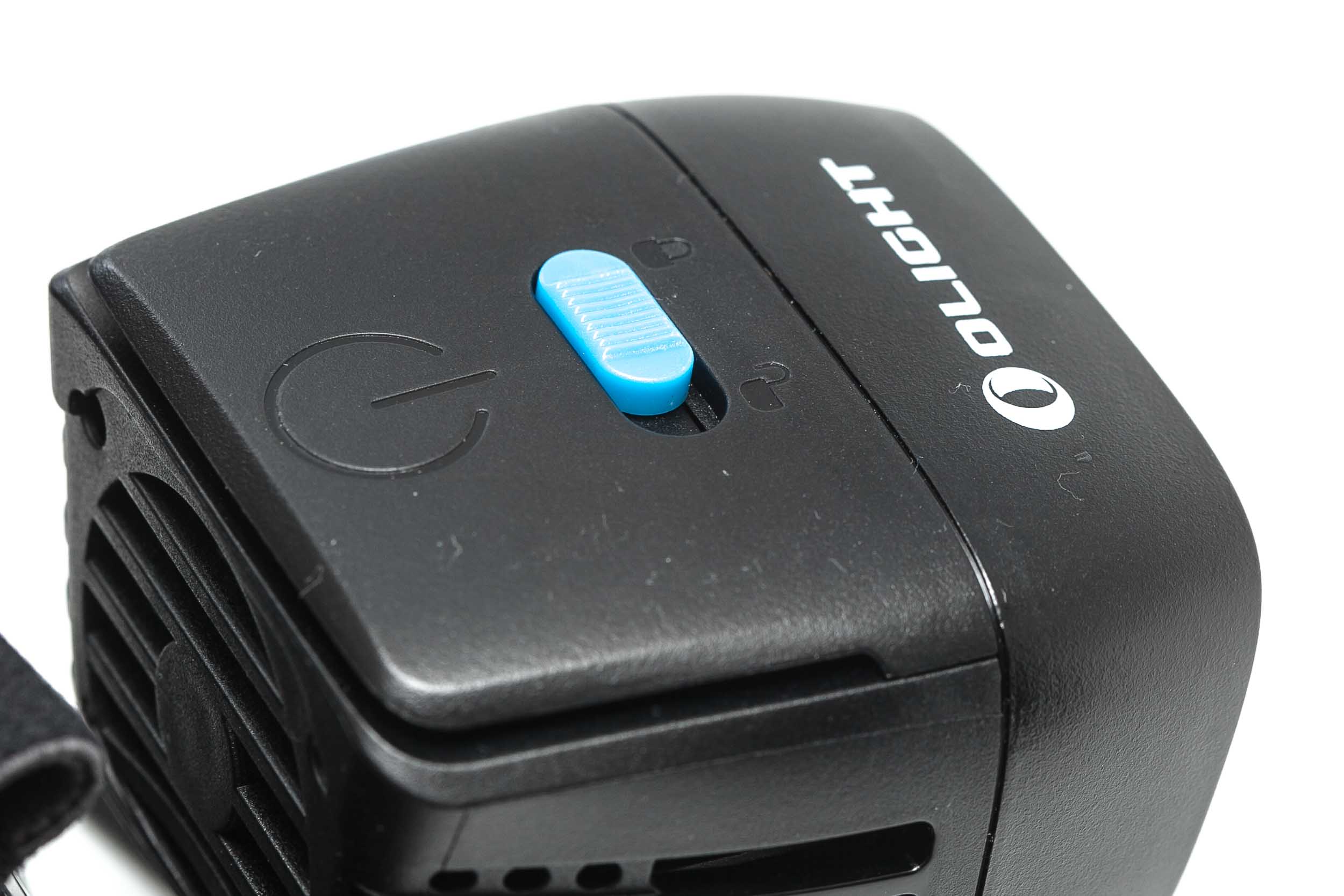
LED, Lens, Bezel, Beam, and Reflector
The H67 uses 6* CREE XHP50.2 LEDs to produce a total lumen output of 12,000 lumens. And that’s insane because no other headlamp is able to achieve that.
There are 3 LEDS on top, and 3 at the bottom, all sitting behind TIR optics.
These CREE LEDs aren’t known for their fine characteristics like High CRI or even the best tint, but they do produce a wall of light. And I must admit, that these TIR optics probably help with reducing the CREE rainbow effect seen on other flashlights with these LEDs.
And we don’t just ‘describe’ the color of the beam, or the tint of the beam, we measure it.
This time, I used the very popular Opple Light Master 3, as well as the Asensetek Lighting Passport Pro Spectrometer.
Unfortunately, the spectrometer’s sensor is quickly over-saturated, so I measured High mode instead of Turbo mode. Turbo mode’s measurements weren’t too trustable.
Opple Light master 3:
- CCT 5970K
- CRI Ra: 71.7
Asensetek Lighting Passport Pro
- CCT: 6333K
- CRI Ra: 73
- CRI R1-R15: 65
The beam:
With 6 CREE XHP50.2’s in shallow TIR optics, the beam is very wide and bright. There is definitely a brighter spot in the middle, but it’s not very defined. The beam has a relatively smooth and nice transition from hotspot to spill.
While riding a bike, you have plenty of side view, which in my opinion is very important. You can’t have enough side spill on a bike light/ headlamp used for biking.

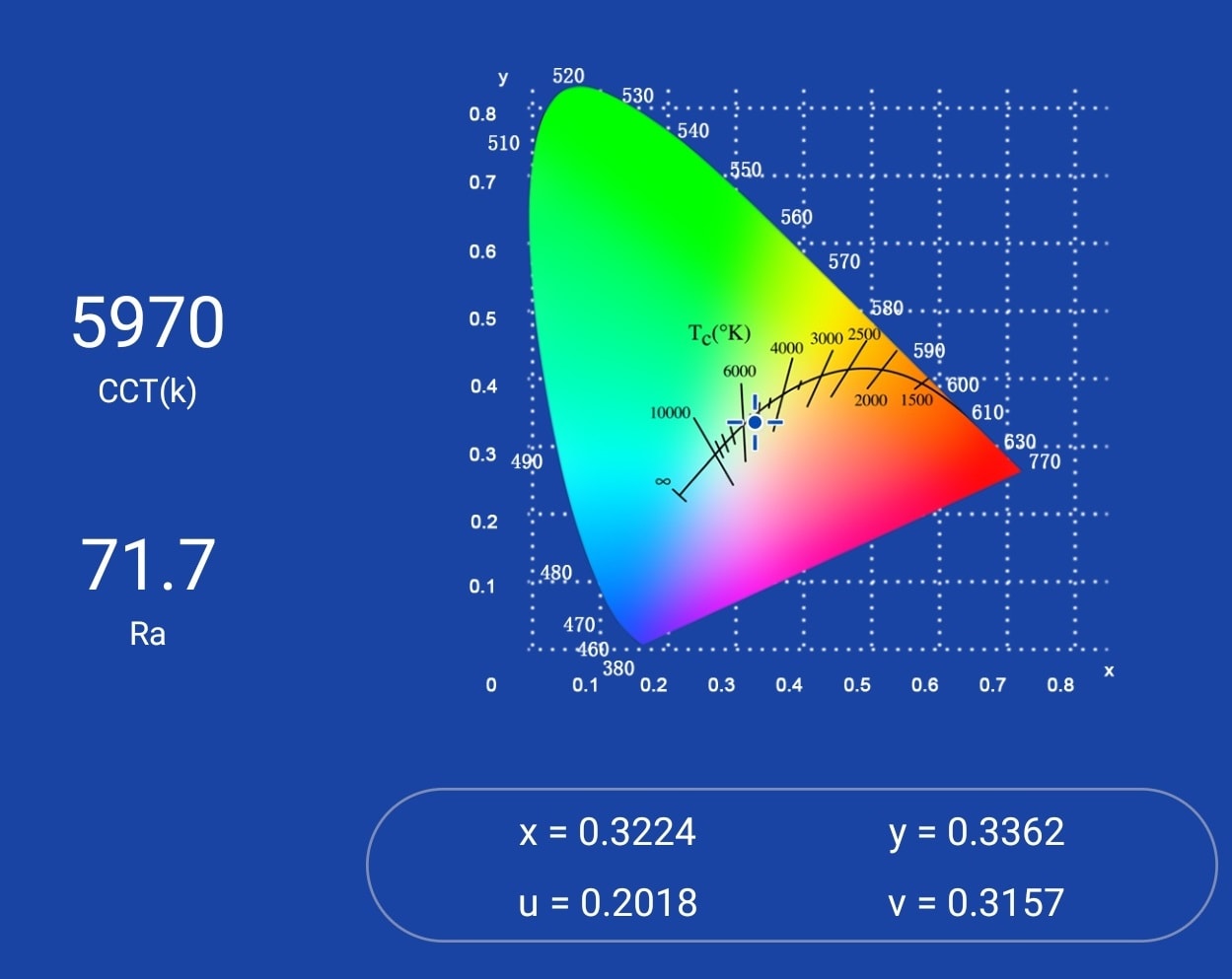
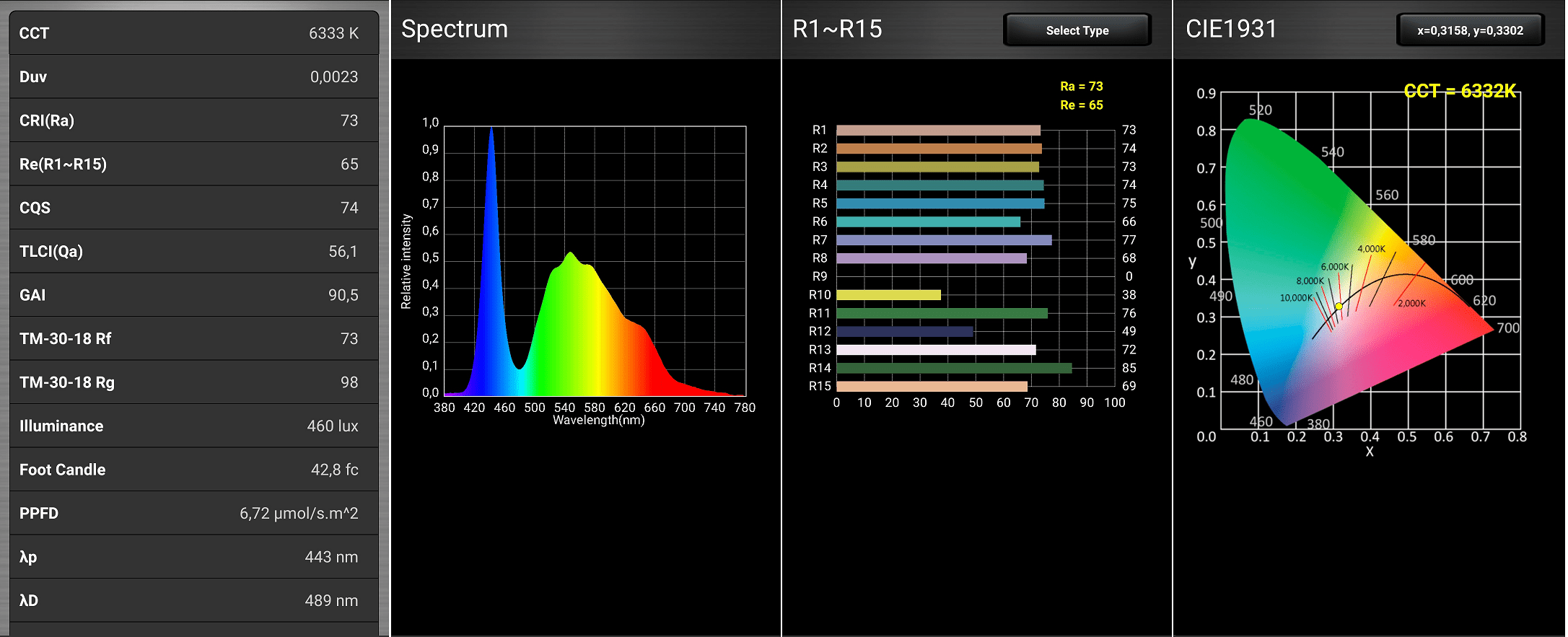
Dimensions and size comparison
Dimensions:
It’s a bit difficult to measure this headlamp.
| Olight H67 | Millimeters | Inches |
|---|---|---|
| The widest part of the headlamp | 67 mm | 2.6 in |
| Height | 54 mm | 2.1 in |
Dimensions are rounded to the nearest millimeter, and to the nearest tenth of an Inch.
Weight:
| Olight H67 | Weight in grams | Weight in oz. |
|---|---|---|
| Lamp + strap and cable | 300 g | 10.58 oz |
| Battery pack | 559 g | 19.72 oz |
Weight is rounded to the nearest gram, and to the nearest tenth of an Oz.
Olight H67 comparison
Size compared to 2 other headlamps
Group 1, from left to right: Olight Perun Mini 2, Olight H67, Fenix HM50R v2.
I know they are not really competitors, but it gives you a good indication of the size.
Group 2, Silva Spectra, Magicshine Monteer 12000, Olight H67
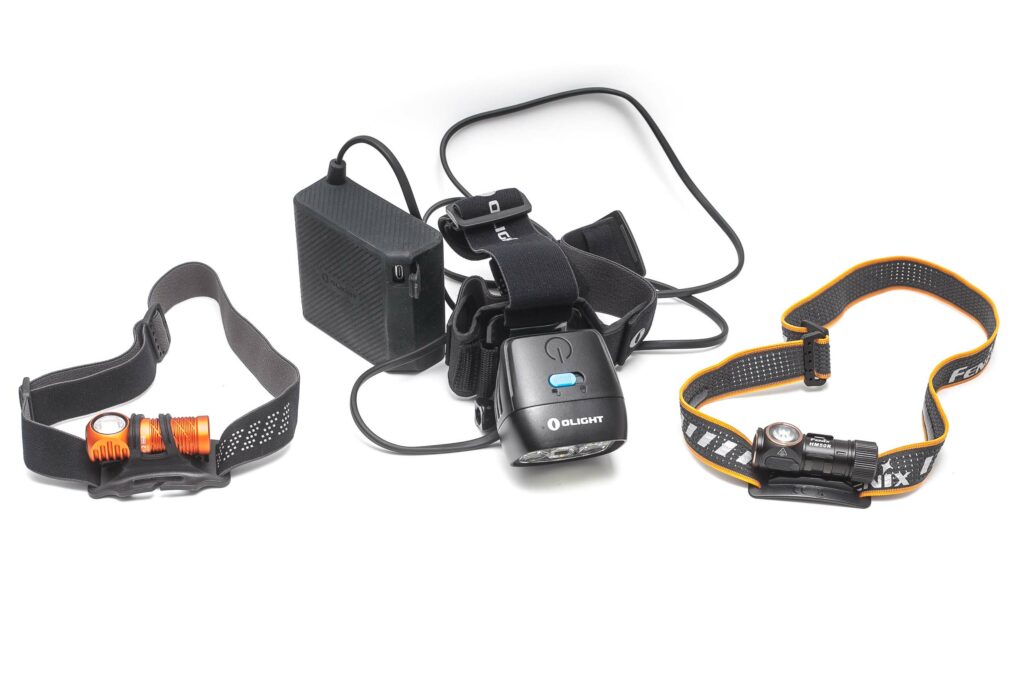
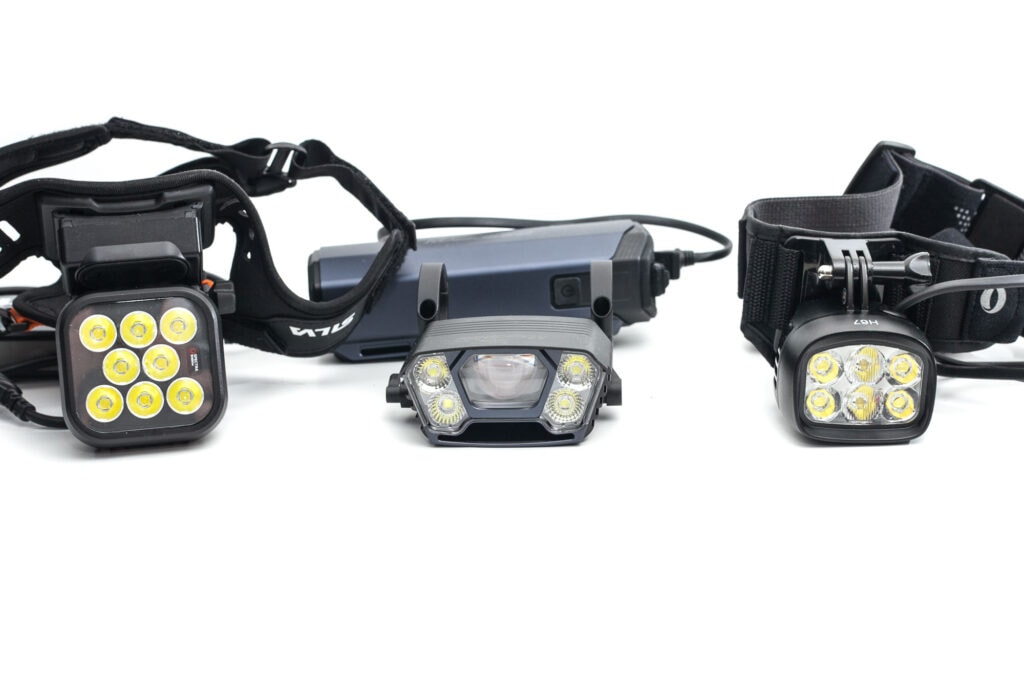
Driver & User Interface:
The top of the headlamp is a large switch, covering about 60% of the head. This makes it really easy to change mode, and turn it on/off. There is a mechanical lock switch to reduce the likelihood of accidental activation/deactivation.
You run through the modes by clicking, and a long press for off. This is the perfect UI even though many people may not like the long press for off. There is no other way around it. You don’t want to press and hold to change brightness while going downhill. A quick tap on the switch will change the brightness, and a double click goes to Turbo.
Available main modes:
- Low, Medium, High, Turbo
Available special modes (blinkies):
- SOS
From OFF:
- Single-click: to last used mode, because it memorizes the last used mode (except for Turbo)
- Double click: Turbo
- 3+ clicks: Turbo
- Press and hold: SOS
From ON:
- Single-click: Cycle through the menu from Low to High, and back from Low again
- Double click: Turbo
- 3+ clicks: still Turbo
- Press and hold: turn off
Shortcuts:
- To Turbo: double click from on/off
- To SOS: long-press from off
Mode memory:
- Yes, it does memorize the mode, except Turbo.
Blinky modes menu:
- SOS, which is only accessible from Off.. And that’s how it is supposed to be on this type of headlamp.
Low battery warning:
- You can only see it on the battery pack, not on the light itself. At least, I haven’t noticed it in the runtime tests.
Lock-out mode:
- There is a mechanical switch on top of the lamp. The lockout mode works while the light is turned off, but it also works when the light is turned on. Great feature. Especially if you are walking through woods, and you accidentally touch the switch with a branch, it won’t change modes.
PWM:
- Not visible by eye.
Firmware / UI Conclusion:
I like the UI although I had to get used to it, with the single click for on, but a long press for off. The large switch is excellent.
Batteries & Charging
With a 65-watt USB C charger: 4 hours and 32 minutes from start to finish. Charged at 19V and 1.4A and about 29 Watts.
With a 17-watt charger, it charged at 12V and 1.6A… at about 19.44 Watts Charging time: 6 hours and 46 minutes. But the last 45 minutes were slow charging, and you could have easily unplugged it.
During the charge, there are 4 LED lights visible on the battery pack. They start off with 1 and increase to 4. When all 4 LEDs are solid, the charge has finished.
You can charge at 5V, 9V, 12V, and 20V, so you don’t have to have the highest wattage USB power source, but you just need to wait for a bit longer.
And since the battery pack is removable, you could get a spare one, and extend the battery life without recharging. However, the battery pack is really heavy, so I’m not sure that is what you want to keep carrying around with you.
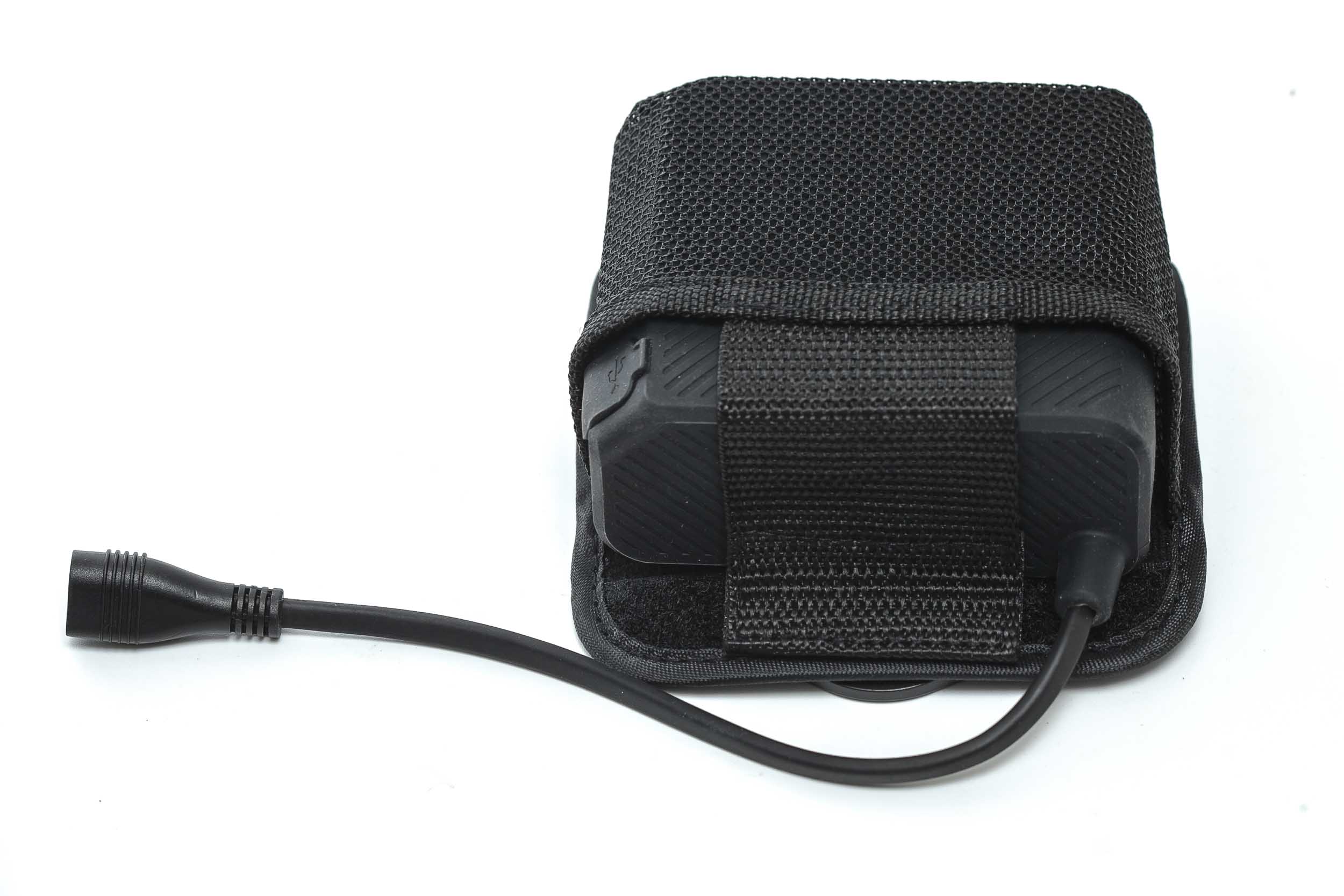
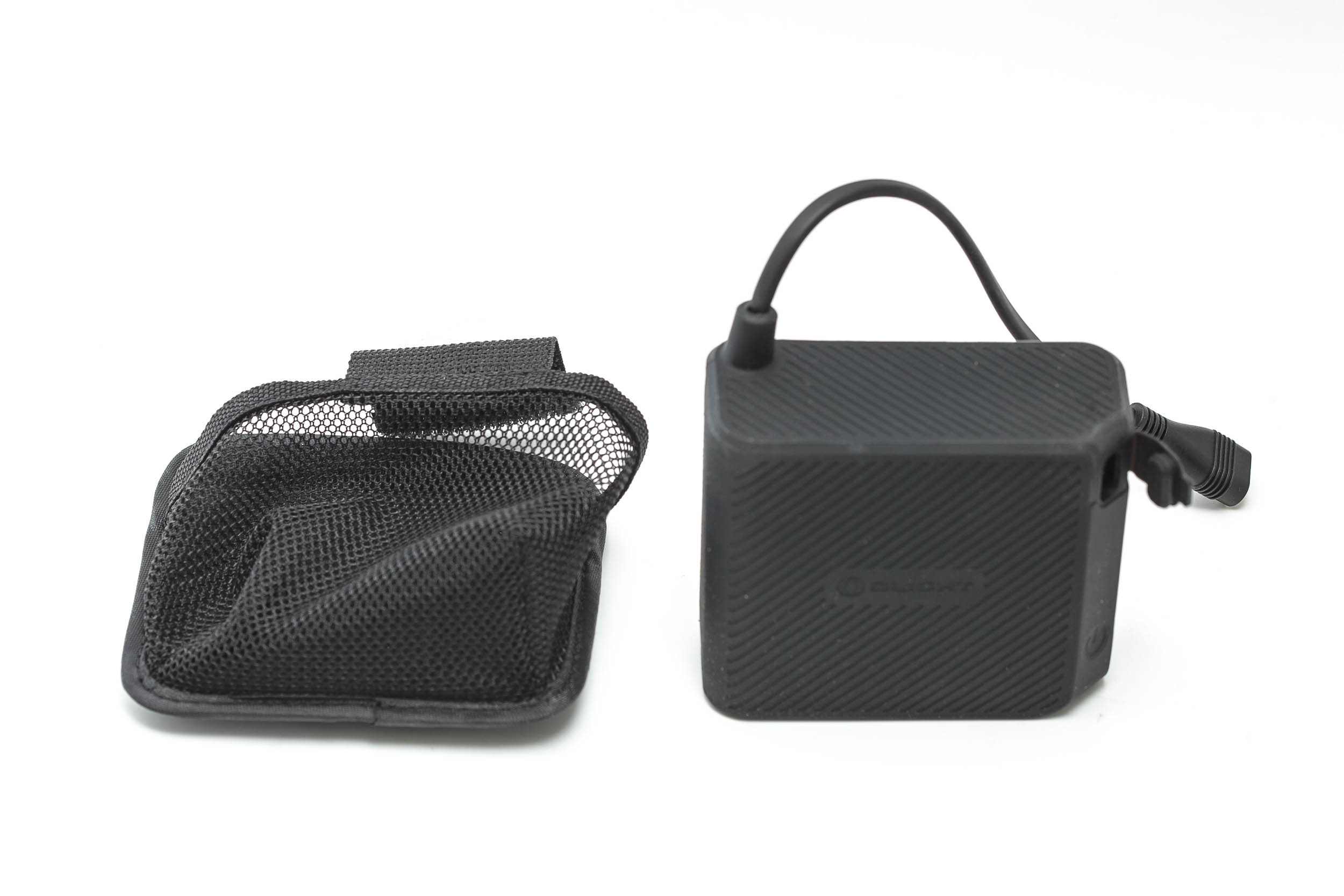
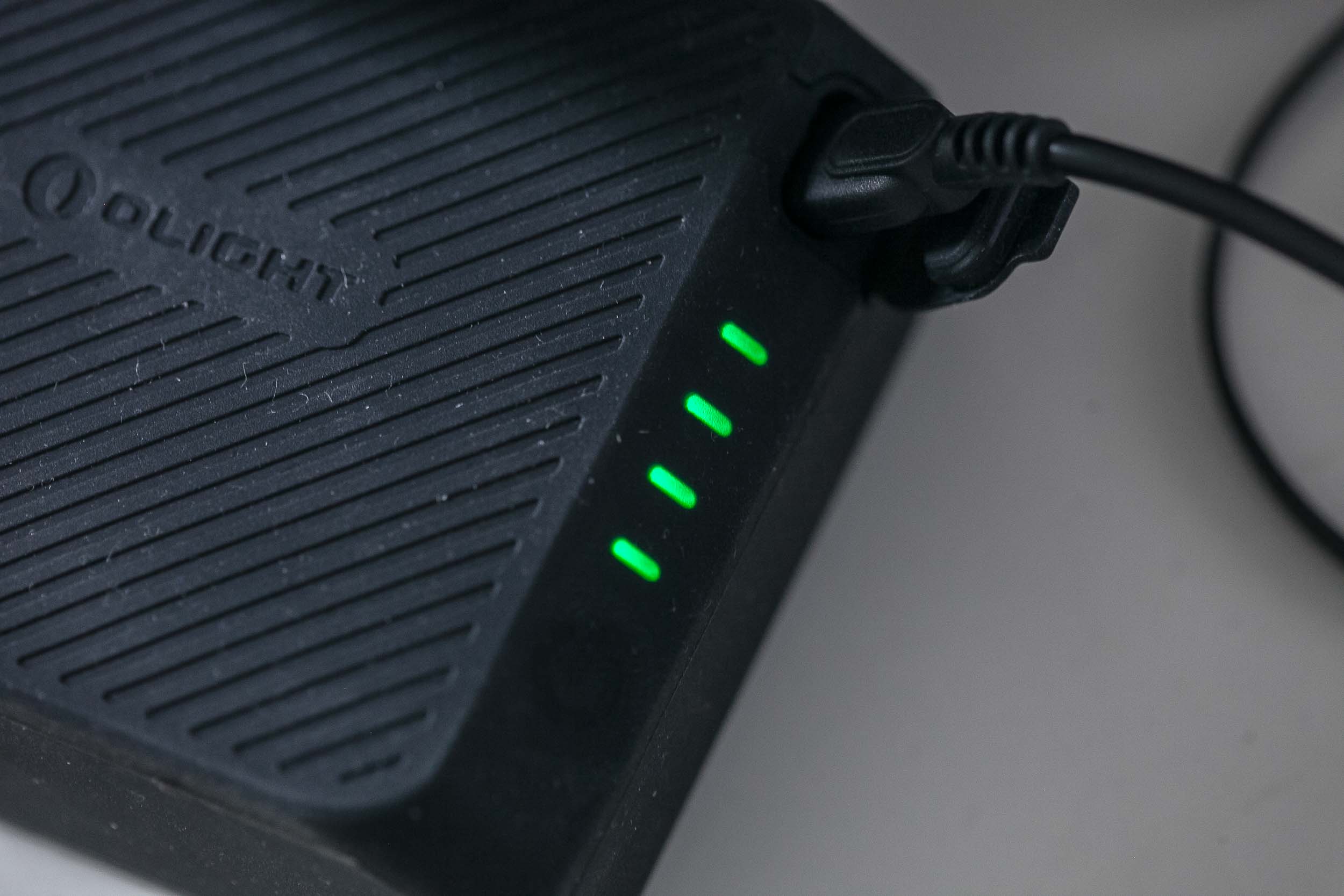
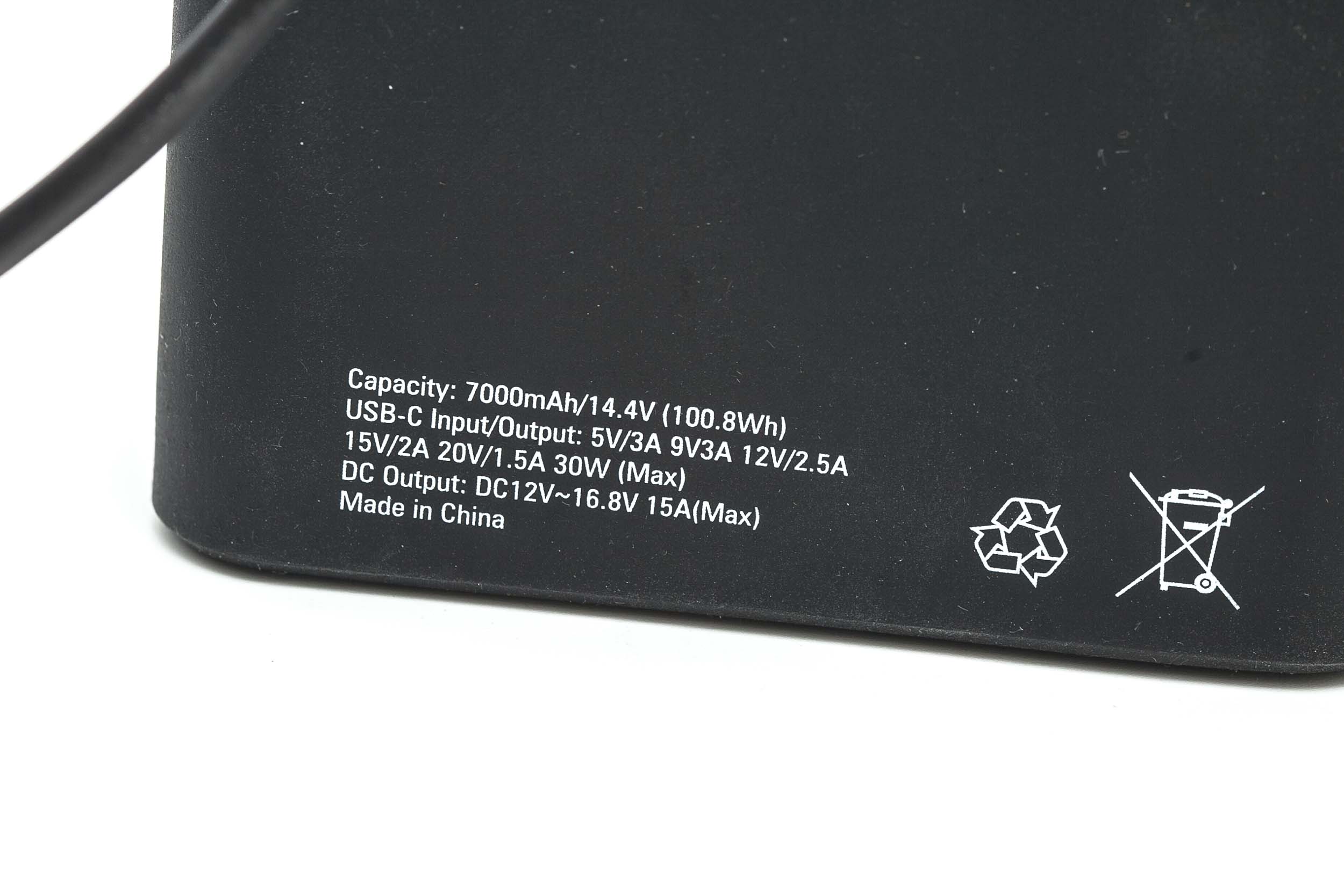
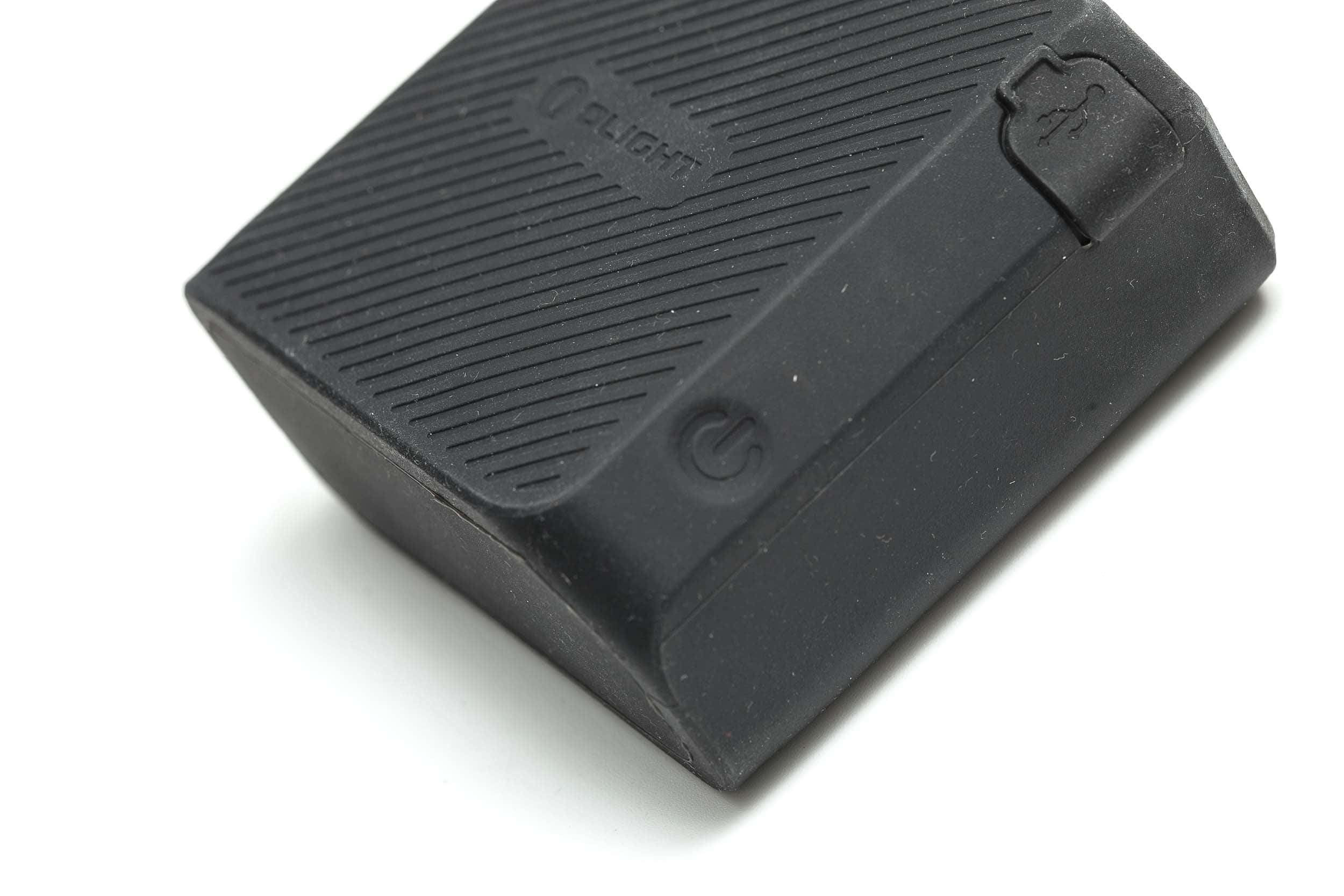
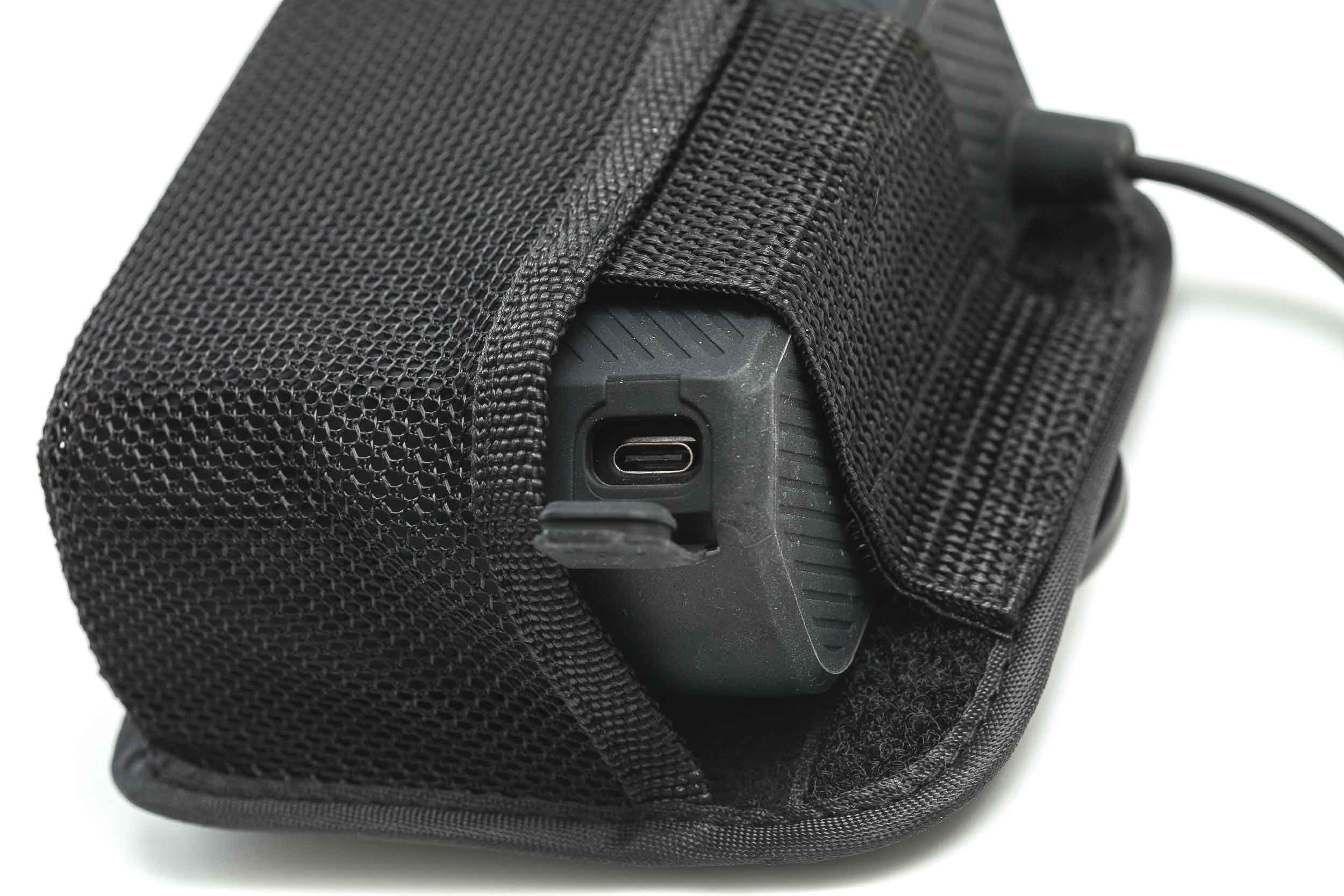
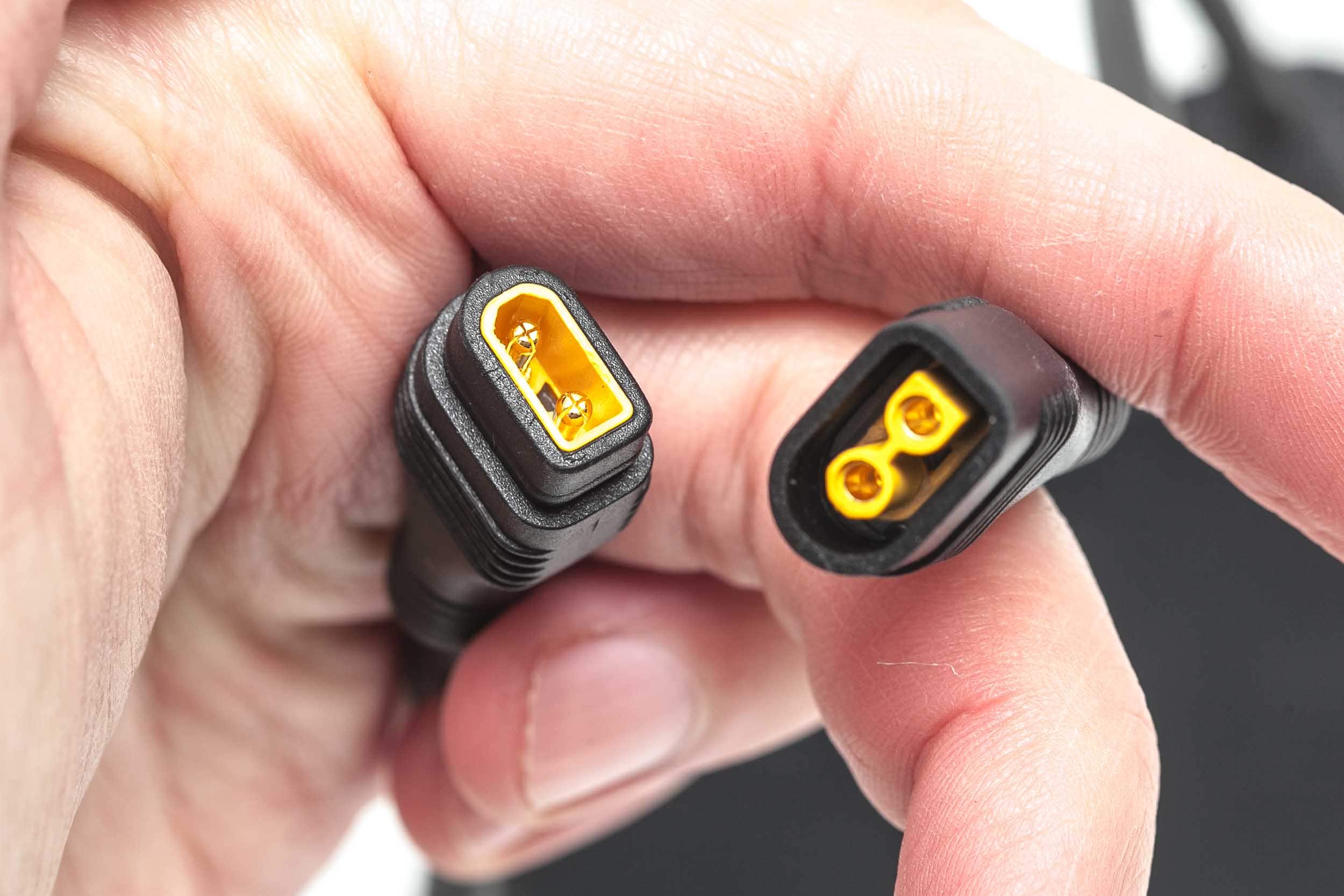
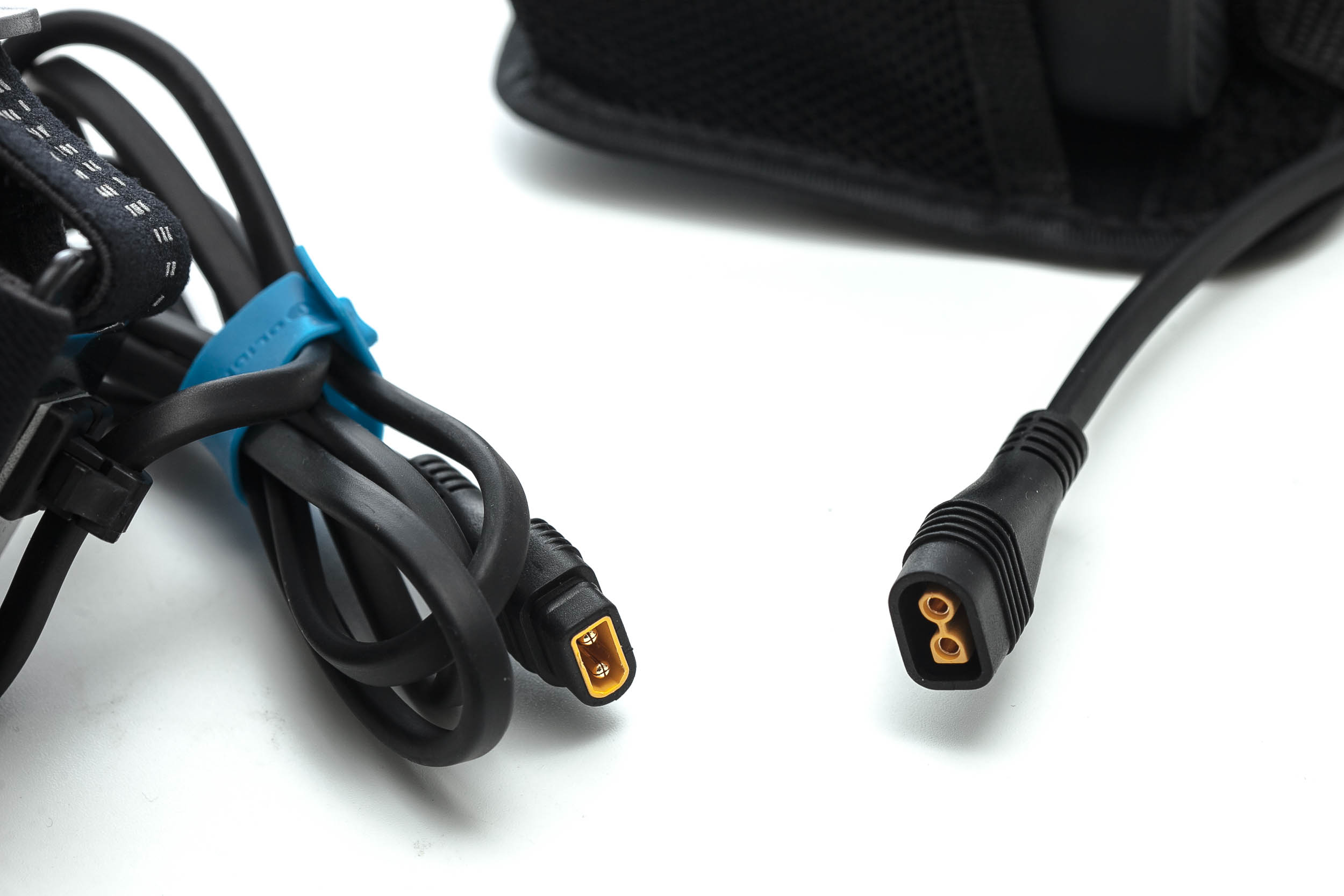
Performance test
This is the gear I used for testing:
| Gear | Purpose | Link to buy |
|---|---|---|
| Hagner E4-X | Measuring beam intensity (throw) | Inquire at Hagner.se |
| Extech SDL400 | Lumens and logging runtimes | Amazon.com, Amazon.co.uk, |
| Leica Disto D2 | Distance for throw measurements | Amazon.com, Amazon.co.uk, |
| Asensetek Lighting Passport Pro Standard | Spectrometer for LED measurements | – |
Lumen measurements:
The output measurements in this review are based on my homemade integrating spheres, each equipped with an Extech SDL400 Lux Meter. For consistency and accuracy, a calibration light (Convoy S2+ with 249lm and a Convoy S2+ with 261lm) is measured prior to each set of lumen measurements.
For high-output lights, one of the lux meters uses an ND camera filter to prevent the lux meter to max out. This is either the Kenko PRO1D ND16 up till about 80,000 lumens or Gobe ND32 for anything above.
All of my readings were taken from a fully-charged battery pack.
The measurements were taken manually at turn on and 30 seconds. The 10 minute numbers are taken from the runtime graph.
| Mode | Specs | at turn on | 30 sec | 10 minutes |
|---|---|---|---|---|
| Low | 400 | 494 lm | 494 lm | 493 lm |
| Med | 1200 | 1,313 lm | 1,313 lm | 1,288 lm |
| High | 4000 | 4,249 lm | 4,213 lm | 3,954 lm |
| Turbo | 12000 lm | 14,322 lm | 13,371 lm | 6,139 lm |
I try to use rounded lumen numbers, except for maybe Low or Moonlight/Firefly modes.
Olight H67 Battery life and runtime graphs
The runtime test was done with the 50cm home made integrating sphere, combined with the Extech SDL400 data logging Lux Meter.
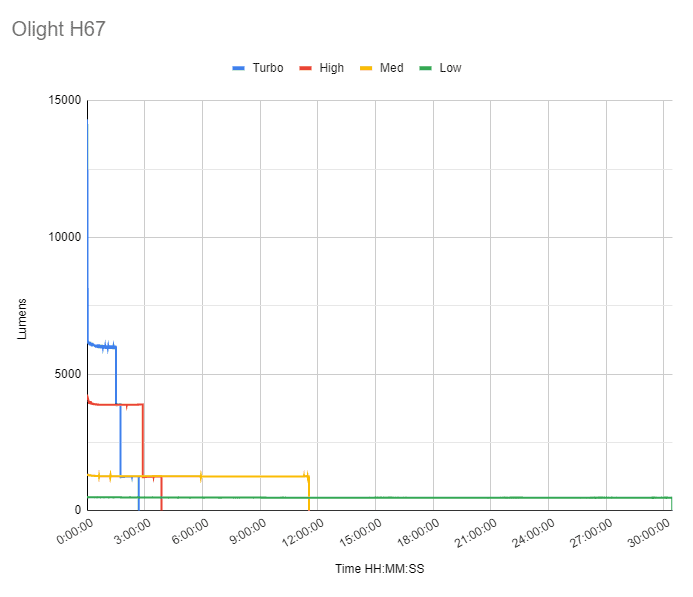
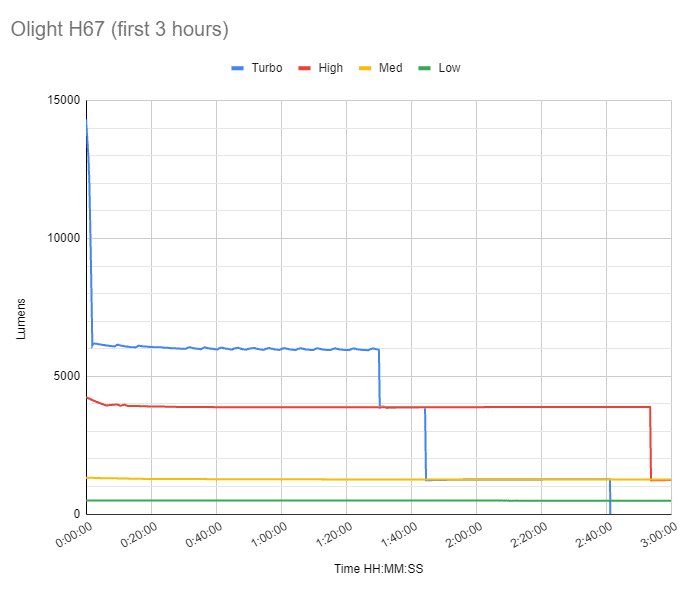
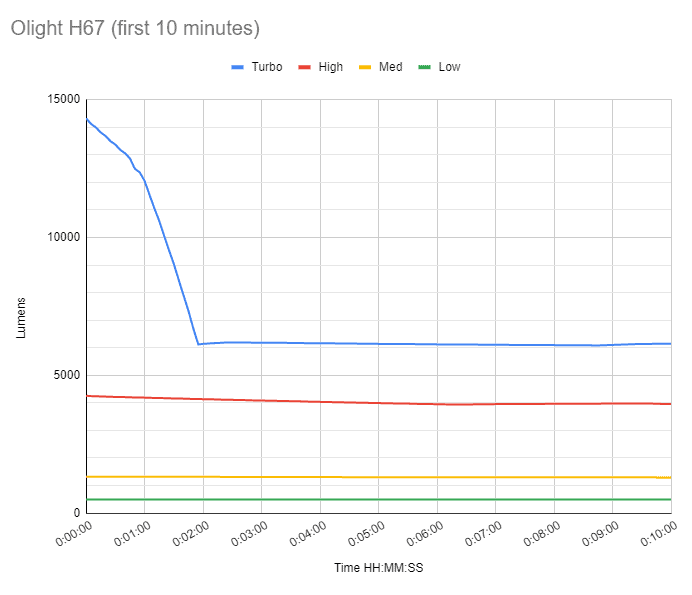
| Mode | Specified | Measured runtime (ANSI FL1) | Time till shut off |
|---|---|---|---|
| Low | 38h | 30h 26min | 30h 26min |
| Med | 13h | 11h 32min | 11h 32min |
| High | 3h + 1h = 4h | 3h 52min | 3h 52min |
| Turbo* | 2min+100min = 1h 42min | 1h 44min | 2h 42min |
Keep in mind that the manual states there is a Motion sensor built in. This is used to maintain a constant brightness output in high-speed movement, and auto-reduce the output gradually in low-speed movement, extending lighting time. So my measurements were done in an environment where I didn’t activate the motion sensor, so that might be
The built-in fan also works wonders and keeps the light in high sustained output, and temperature controlled. Once the light cools off, the fan rotates at a lower speed and eventually turns off.
Turbo has a runtime of 1h and 44 minutes according to ANSI standards, but the light keeps running at over 1000 lumens till it turns off almost 1 hour later. Pretty incredible
High steps down at 2h 53min but then continues running for another 1 hour. There is no warning at the end of its battery life, so you need to keep this in mind.
Unfortunately, Medium mode and Low mode didn’t come close to the specced runtimes.
About ANSI FL1 standards: The runtime is measured until the light drops to 10% of its initial output (30 seconds after turning on). This does not mean that the flashlight is not usable anymore. The last column shows how long the light actually works till it shuts off. If there is a + symbol, it means that the test was stopped at that particular point, but the light was actually still running. This happens on certain occasions, with certain drivers, firmware, or batteries.
Olight H67 Peak beam intensity and beam distance measurements
Measurements were taken indoors with a Hagner E4-X Lux Meter at 5 meters. The measurements were recorded 30 seconds after activation.
| Mode | Specs | Candelas measured | Meters | Yards |
|---|---|---|---|---|
| Low | 60m | 1,275 cd | 71 m | 78 yd |
| Med | 100m | 3,450 cd | 117 m | 128 yd |
| High | 180m | 11,550 cd | 215 m | 235 yd |
| Turbo | 310m / 24,000 cd | 35,775 cd | 378 m | 414 yd |
It easily outperformed the specs in all modes.
About peak beam intensity: Peak beam distance according to ANSI FL1 standards: The calculated value of distance in meters at which the flashlight produces a light intensity of 0.25 lux. (0.25 lux is about the brightness of a full moon shining on an object). The columns ‘Meters’ and ‘Yards’ use rounded numbers.
Beamshots
For the following beamshots, I used a Canon EOS 5D Mk2 with a 50mm lens. Manual settings: ISO1600, 1/4sec, F4, 5000K
The shed is about 65 meters / 71 yards away, and the reflective fence is about 200 meters.
The following lights are compared:
- Olight H67
- Olight Marauder 2
- Olight Marauder Mini
- FireFlies PL47 g2
- Armytek Wizard C2 Pro Max
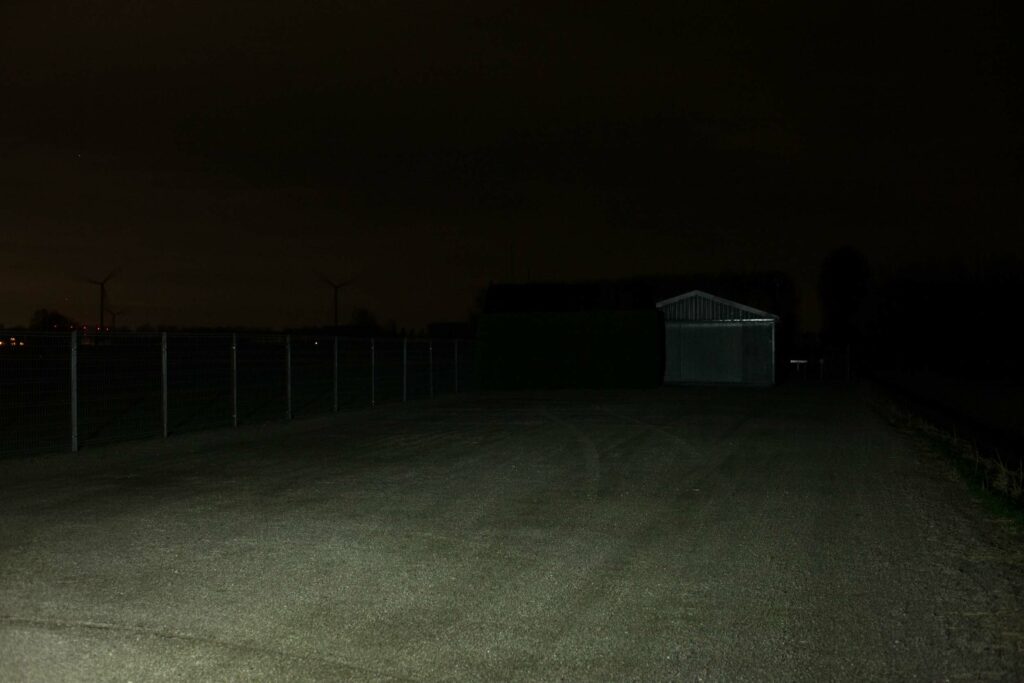
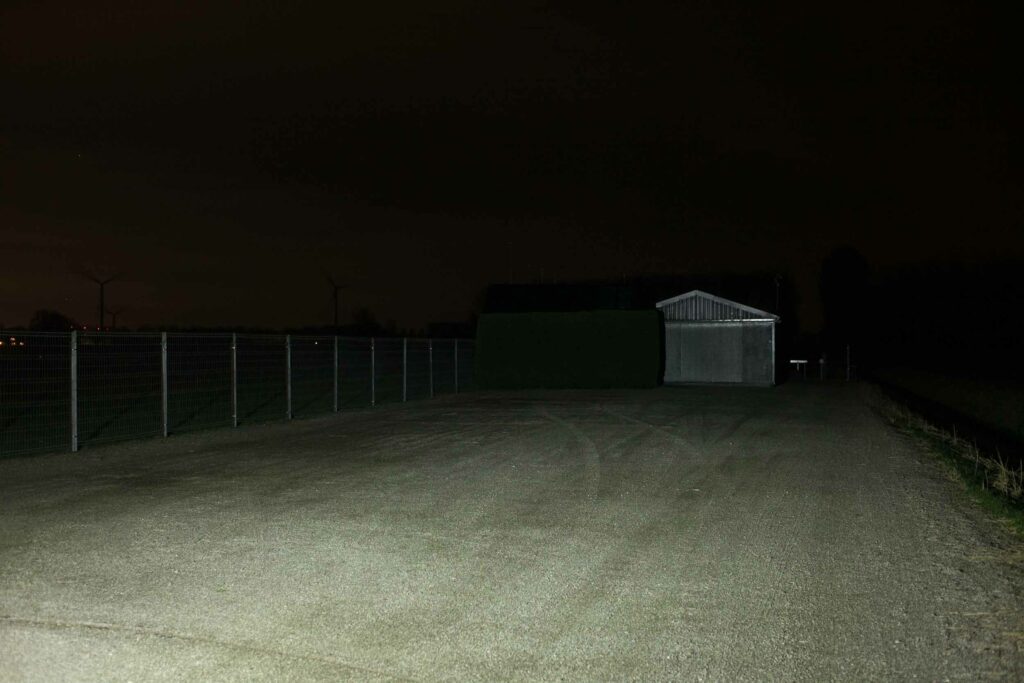
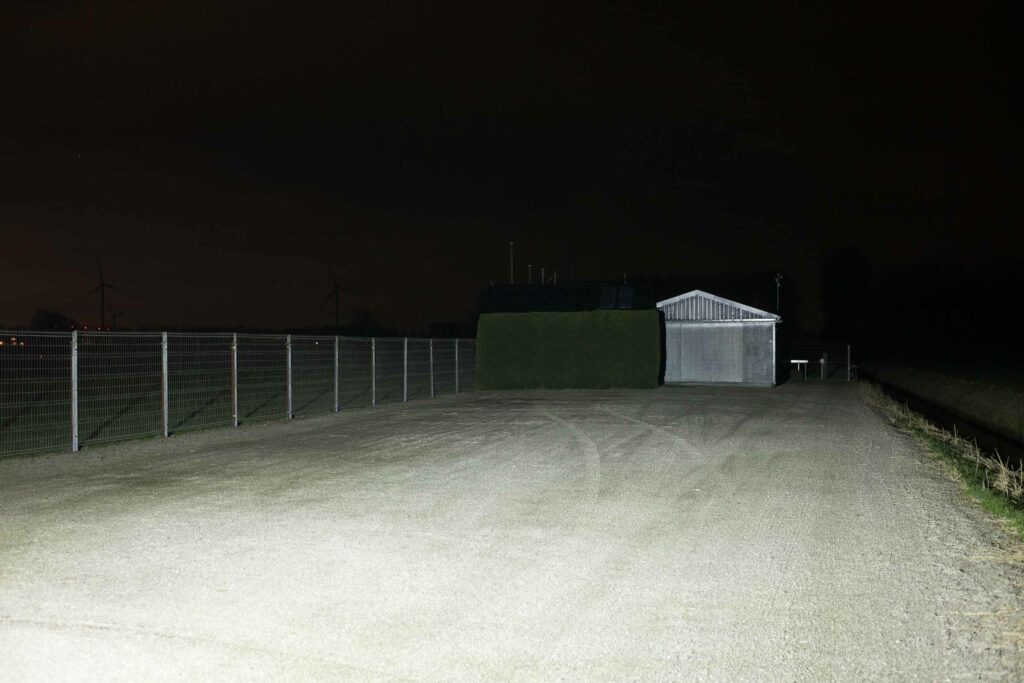
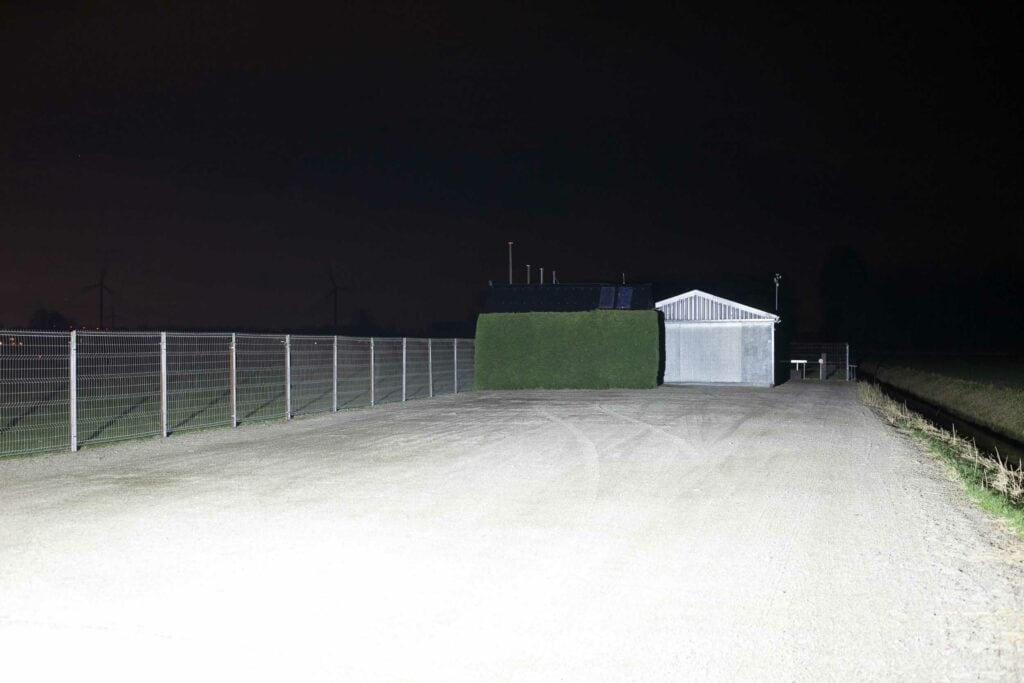
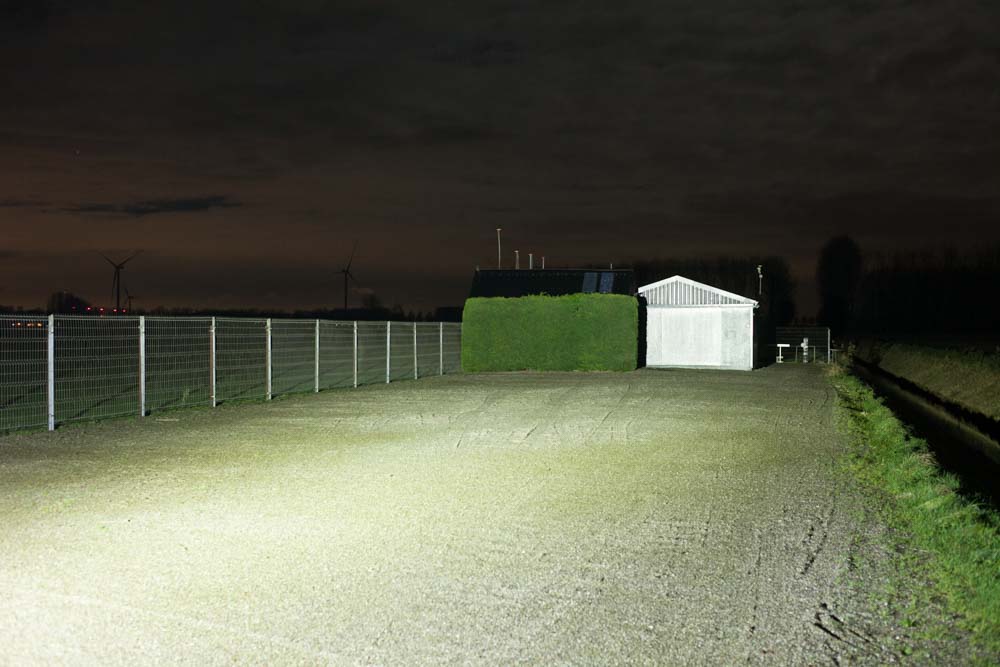
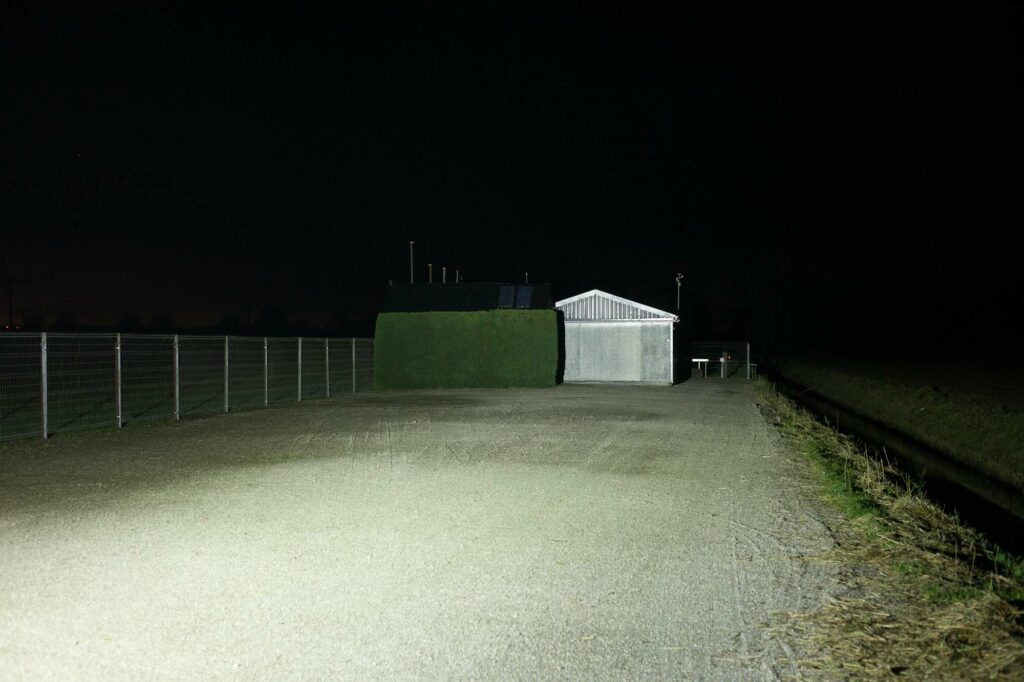
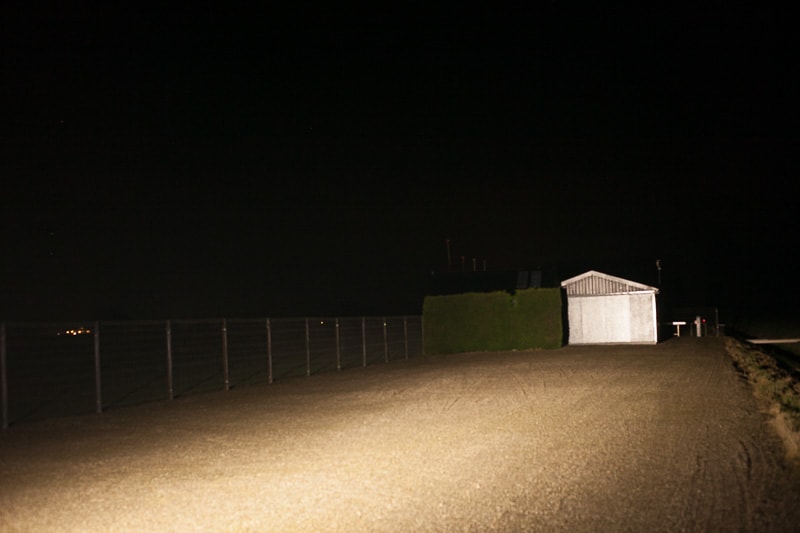
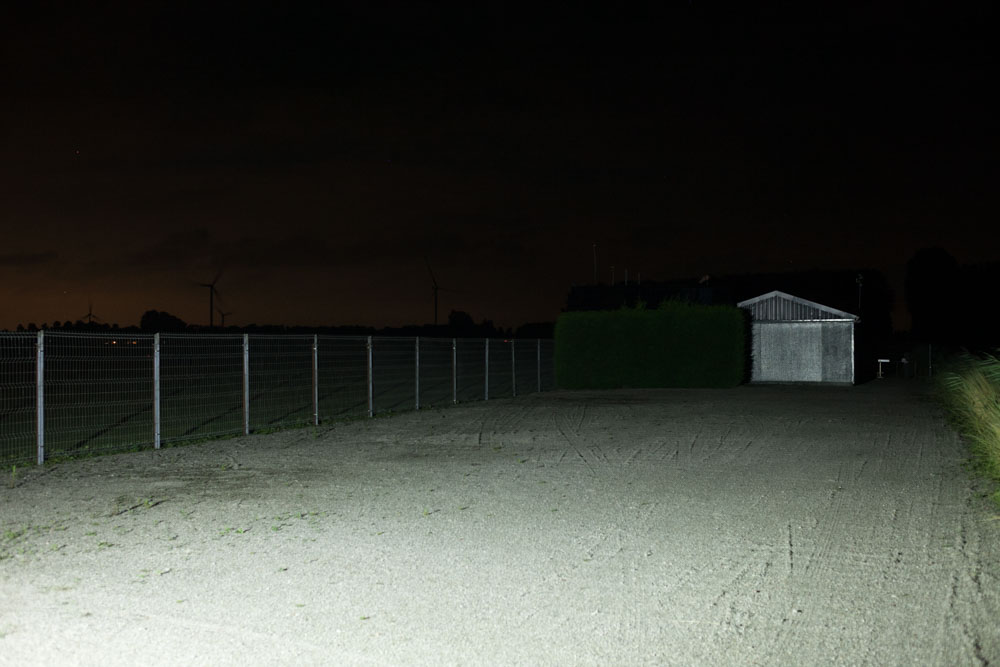
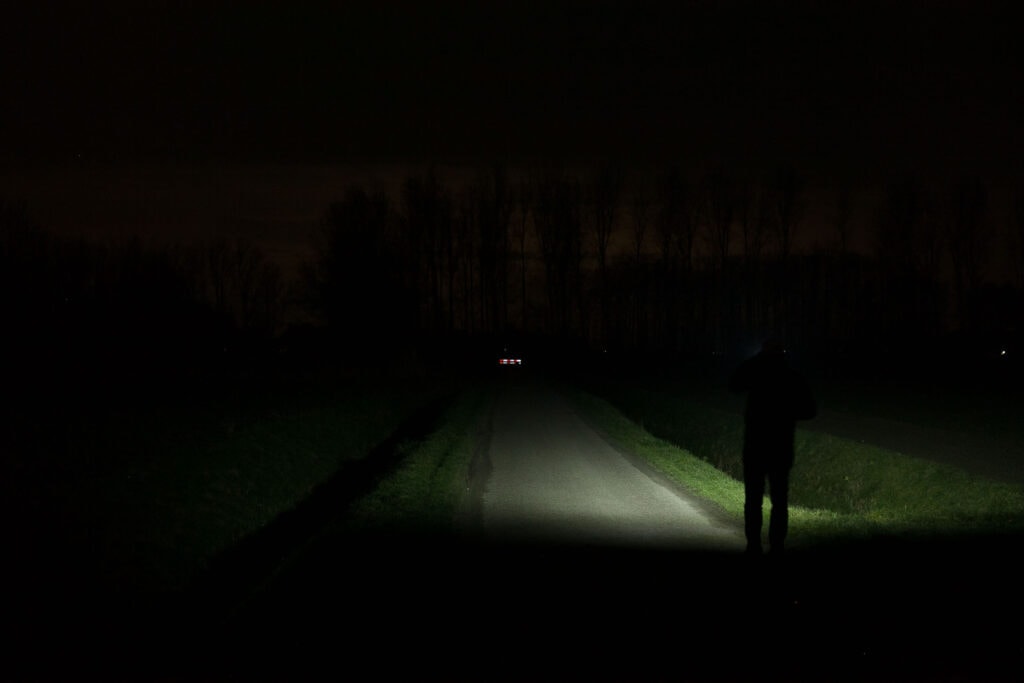

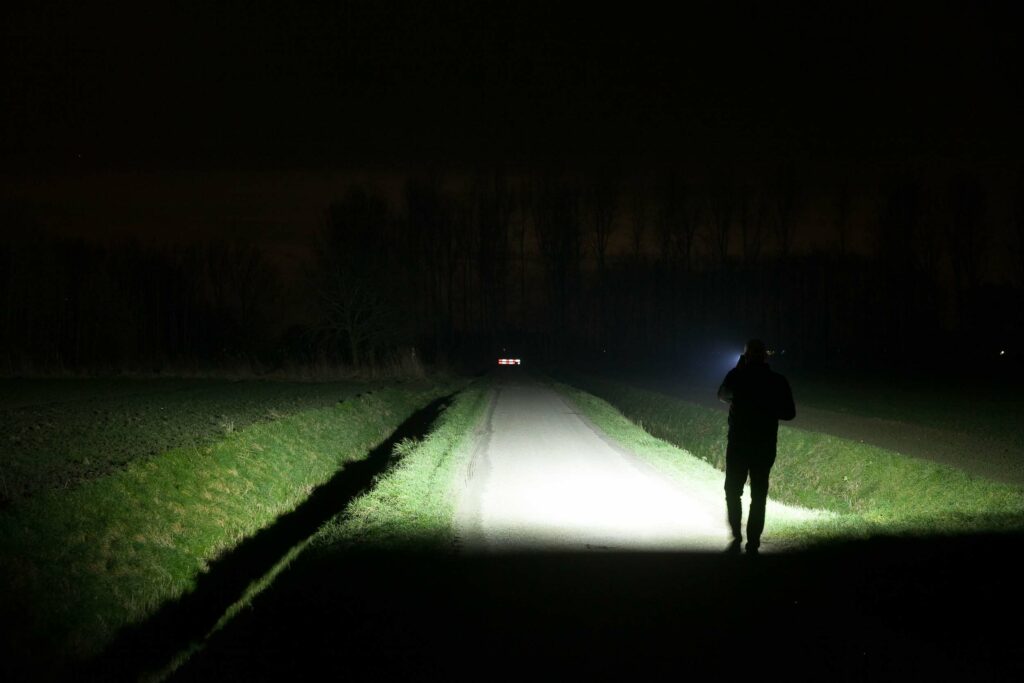
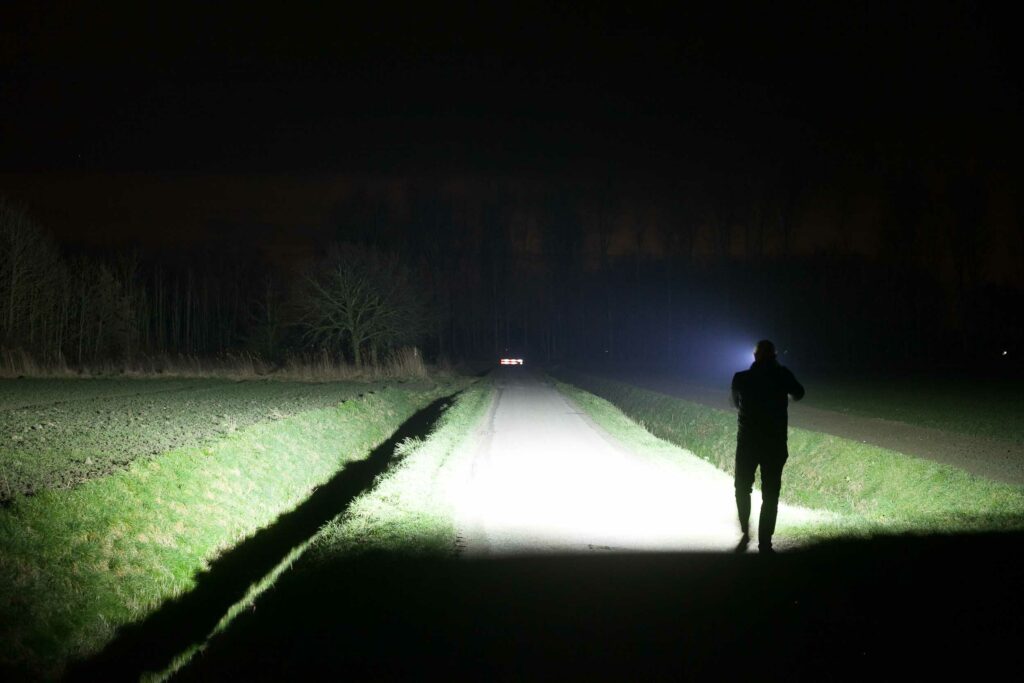
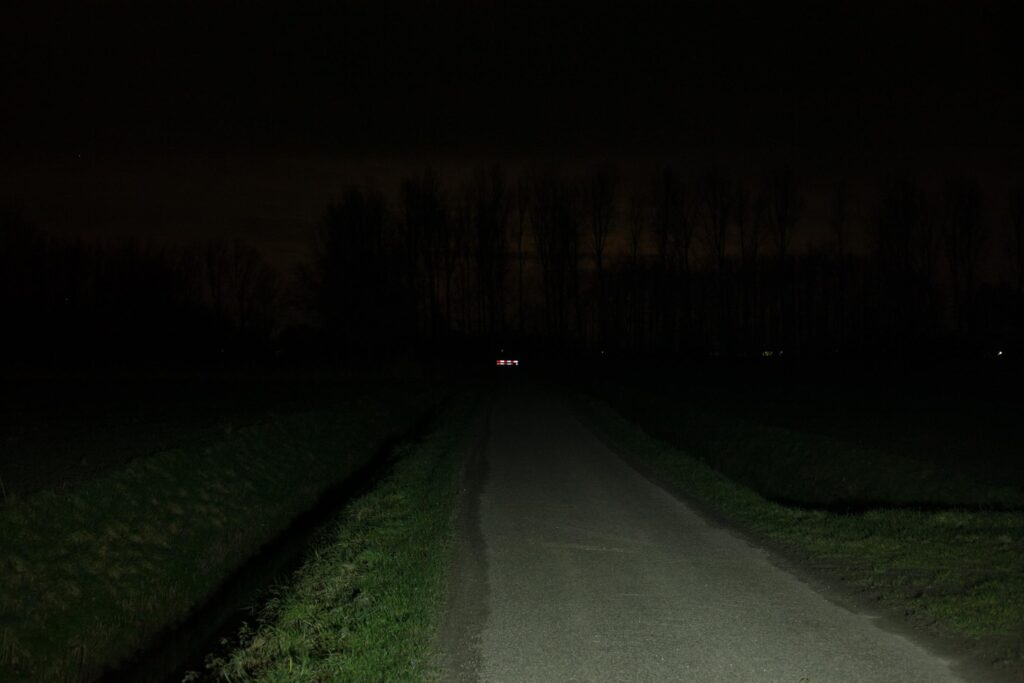
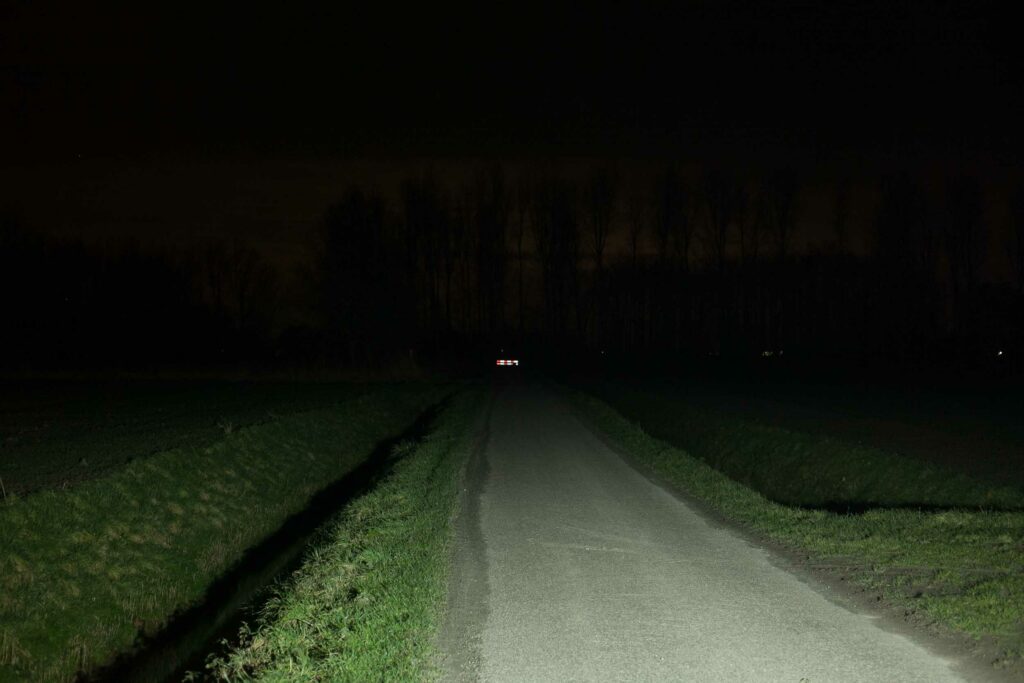
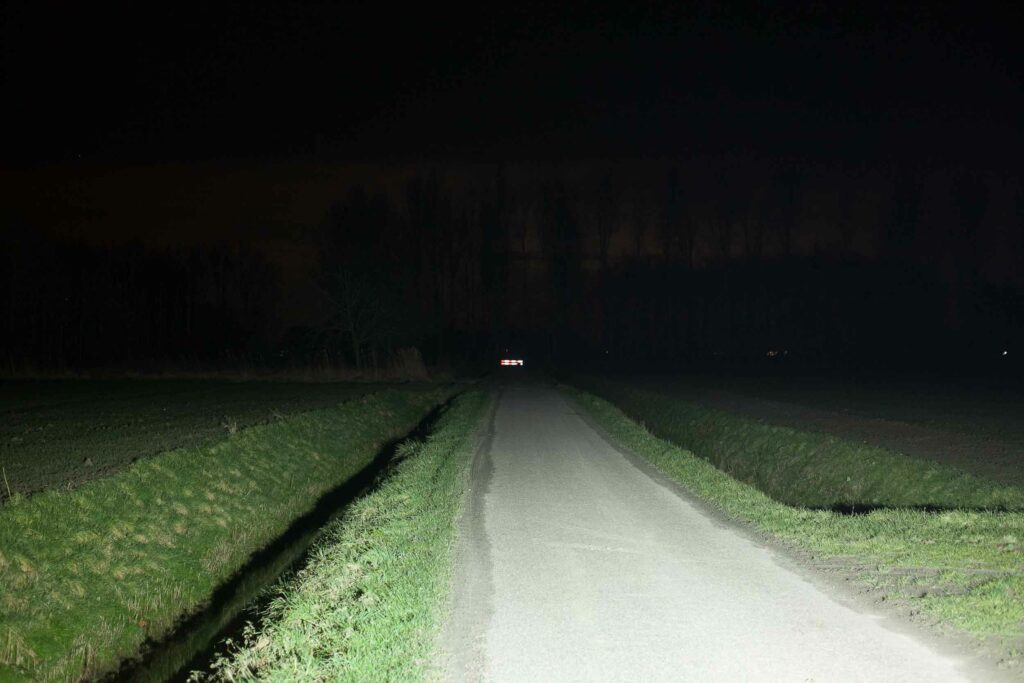
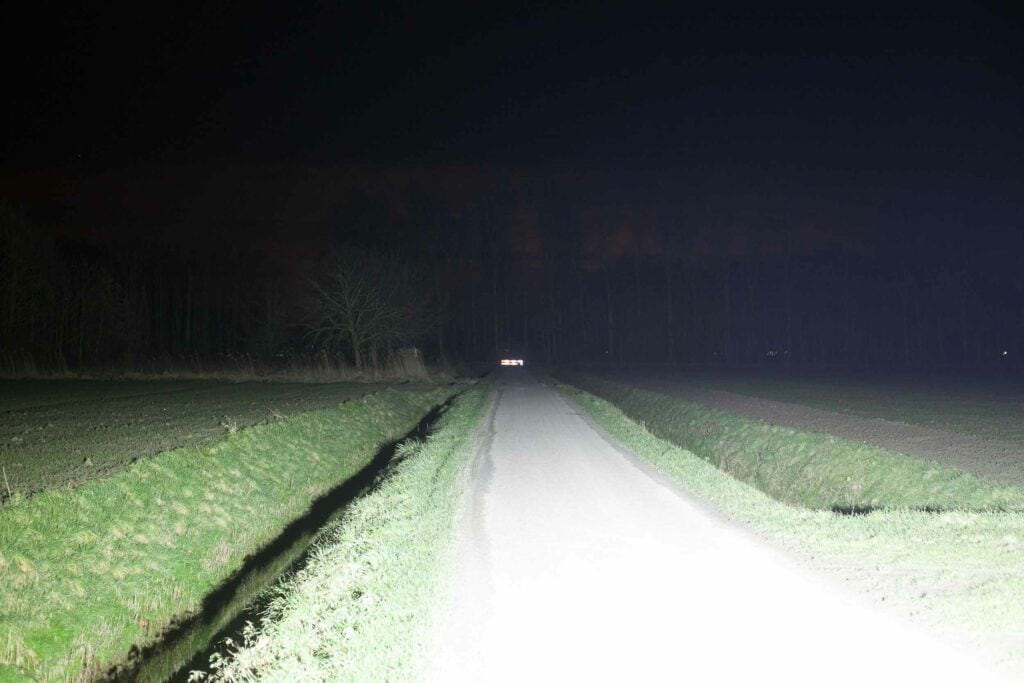
Disclaimer: I bought this flashlight with my own money. Nobody paid me to review this flashlight, nor have I been holding back on problems or defects.
Final Verdict
Pros
- Very large battery pack of 100Wh
- Remote battery pack so no extra weight on your head
- The swich is really big and easy to use
- Has a lockout switch to deactivate the main switch, while on and off.
- Output is very good, including runtimes
Cons
- No lower mode than 400 lumens?
- Not available outside the EU
- Have a better way to attach the cable to the headstrap. Design flaw?
- Runtimes for Low and Med weren’t as good as specs.
- The fan is audible (but only when the headlamp unit gets hot in the highest output)
Explanation on star ratings:
1: Avoid: my phone flashlight would be a better choice – 2: Poor: significant defect or issues; almost unusable – 3: Average: some defects or issues; but still usable 4: Good: recommended (minor issues) – 5: Great: highly recommended

4.5 stars: ★★★★⋆
Do you really need 12,000 lumens on a headlamp? Probably not.
Do you think it’s cool to have 12,000 lumens on a headlamp? Definitely yes.
The Olight H67 is probably not the first headlamp you would use for daily tasks around the house or reading a book in bed. But for high-speed activities at night, this is something worth considering. If you’re into some extreme sports for example.
There are a few cons that I mentioned above, but even with those, this is a pretty astonishing headlamp. And truth be told: it should be, at the price I paid for it.
While any real 12,000-lumen flashlight would be extremely heavy and big, the H67 headlamp isn’t. It’s performing like the Olight Marauder 2, without the weight. A remote battery pack and a built-in fan (to cool the headlamp, it doesn’t need a lot of mass) make it a pretty comfy headlamp, because of the only (minimal) weight of the headlamp unit itself. And with the wide and large head straps, it stays in place very well!
Buy your Olight H67 here
Not available outside the EU. Here are 2 Dutch stores:
1lumen selects and reviews products personally. We may earn affiliate commissions through our links, which help support our testing.